Today most indigenous cultures have lost their connection to the spirit of Nature to a large extent. They have abandoned the beliefs and traditions of their forefathers in favor of the ways of modern materialism. The people's respect and need for shamans has disappeared and so the shamans whose role it was to connect the people with the Divine forces of nature have vanished. These mystical shamans have been replaced in many cases by money hungry con-artists and drug pushers selling sex and narcotic herbs and other forms of worldly indulgence as an experience of other realms. Their true spiritual traditions having been denigrated and desecrated by the propaganda of imperialists, colonists, and evangelists, many have turned to black magic and find themselves connected to dark forces instead of to spiritual light. Yet the traditions of previous generations of ancestors remains in the form of stories of miracles, supernatural powers, astral travel, unseen forces, possession, hauntings, curses, angels, forest spirits, fairies, elves, dwarfs, gnomes, trolls, ghosts, vampires, demons, aliens, yetis, shape-shifters, mermaids, unicorns, dragons, and banshees. But the people who see these spiritual beings are no more and the shamans who helped the people to navigate the worlds of such spiritual forces have become extinct in much of the world today. Many major faiths have written off such spiritual experiences as heretical or superstitious, and many rational people have come to find the notion of receiving messages from the Universe or hearing God speak to them as delusional. Prayer has been transformed from an experience of communing with spiritual forces around oneself in Nature to a distant cry to an inactive and unresponsive divine Ruler. It is no wonder that many people around the world feel spiritually unplugged and are longing deeply to reconnect with the spiritual ways of their ancestors. Many New Age practices aim at reconnecting with the spiritual forces our ancestors experienced. These modern practices are not however rooted in the beliefs and spiritual customs of our ancestors, and because they are being taught by the uninitiated, they are ineffective in most cases. Without some awakened shaman or guru to connect people to the higher vibrational forces around them in nature, many people are connecting inadvertently to dark forces instead. Hinduism is one living tradition which has maintained its spiritual connection to nature through the ages, despite the efforts of centuries of colonial rulers to errode and erase its traditions. By studying and practicing the living Hindu tradition, modern people can gain insight into other allied traditions otherwise lost to time in their native places.
This suffering has caused many people to hunger for true spiritual connection which they are seeking in various ways. Many well-intentioned, but misguided efforts to revive or revamp the ways of our ancestors have been attempted. Our ancestors received the teachings and traditions from their awakened ancestors. The father and mother initiated the son and daughter's spiritual practice and were able to do so on account of their own connection to the spirit of Nature. Modern people have lost an understanding of the crucial role of the shaman and have developed the delusion that they can initiate themselves or be initiated by the uninitiated. Without the blessing of their ancestors and some spiritually awakened guide in the physical realm that they experience, their effort to expand their spiritual awareness are dubious at best
There are certain simple mantras chanted at home by everyone and also specialized hymns and elaborate rituals which are performed by well trained priests. We make regular offerings for the ancestors for their blessings and to ensure their spiritual elevation. We respect the ancient Sages and elders in general, and look up to certain particularly wise elders for spiritual healing and guidance. Many such teachers and healers refer to omens, astrology, and other forms of divination to receive guidance from the Devas in order to know how to best serve the people. Such awakened souls act as guides and intercede for the people to speak to God through nature.
Traditional women wear kumkum and turmeric on the feet for spiritual protection, and married women wear an alchemical preparation of mercuric vermillion at the parting of the hair for protection and fortune. Rings are worn on the toes to help increase fertility. Black collyrium made from lamp soot is used to mark the face of babies to protect them from demonic entities lurking nearby to hurt or kill them in their susceptible developmental years. Amulets are blessed with sacred hymns and kept where babies sleep to protect them from dark forces. Sacred threads are tied around the wrists of brothers by sisters to protect and bless them, and priests and gurus bless devotees in this way also. A sacred thread is worn over the shoulder for initiated men after a grand spiritual initiation sacrament involving days of chanting. This thread is worn as a reminder of the man's vow to God and it is used in his daily prayer and meditations. We believe that nature has a way of returning energy to us and we try to help and please others in order to generate fortune and merit leading us to success and happiness.
Many Hindu's lives are centered around their spiritual experiences which have come through years of disciplined practice of certain mystical techniques inherited from our ancestors. The living Hindu tradition has always maintained the teachings and practices which lead to these spiritual experiences. It has maintained a respect for elders and guides and gurus and ancestors which helps to empower the spiritual practices of the people. The people of different nations longing now for spiritual connection must turn to the ancient and living spiritual traditions like this in order to revitalize the spiritual connection which has been lost from their own traditions. It was not a mistake that Jesus' first act of teaching was to seek to be baptised by John. He was giving a teaching of the timeless principle that our spiritual awakening must be initiated by some spiritual awakened teacher already connected to the light we seek. Grace always comes from beyond for a soul caught in ignorance and egoism. It is not within the ability of the ego to transcend its own nature. For our awareness to expand, we must humble ourselves to faithfully follow the spiritual disciplines laid out by our ancestors and we must bow at the feet of a living master whose power to free us comes from beyond what binds us. Then only is it possible for us to come to know our own nature and to see that we transcend the body and its mind and senses. The human soul is a force of nature. It springs from the Divine prana which guides all movements in the universe. When we connect with its spirit, we see that we pervade all the universe and that nothing is apart from our inner nature which is one with the Divine throughout creation. The practices and customs which enabled people in the past to experience these spiritual truths have been abandoned by most of the world in modern times in favor of seeking more tangible seeming things in the physical realm. The spiritual traditions have been extinguished though many people profess that religion is a quite important aspect of their lives. They do not experience the spiritual things which are described in their scriptures. For them religion is an intellectual concept which has little bearing on their life or experience. Having become extinguished, their spiritual traditions cannot be rekindled without an active spark shared from one of the living traditions which has maintained its connection to the highest light of God.
The practices to awaken this awareness are many and varied within the Hindu tradition. Thousands of years of wisdom have been built upon the realizations and traditions of previous generations and have been passed down through the millennia. There is no other tradition on Earth so ancient, vast and complex. The spiritual path is perhaps nowhere else understood and described in such elaborate detail by any other tradition on Earth. Hinduism is often referred to as the Mother of Religions. It is the most ancient continually practiced tradition in the world, yet it has also maintained an authentic connection to nature. It brings us wisdom of nature and how we fit into it. More importantly, it has maintained an unbroken lineage of awakened souls who from their own connection to Divine forces, can guide and empower the practice and spiritual attainments of sincere seekers. Through the living presence of such masters, the spiritual teachings come to life for seekers, so that they too can experience the sacred in nature around them.
0 Comments
There is a concept of Pancha Maha Yajna, five great sacrifices. These are a constant duty for all living people. These are based upon certain Rina (debts) we have to various beings in life. Our lives are not independent. We are reliant on various beings in order to live prosperous lives. Based upon what we take from others, we assume certain debts, which are paid off through the practice of the Pancha Maha Yajnas. The five debts are 1) Pitri Rinam (debt to the ancestors), 2) Deva Rinam (debt to the Gods), 3) Rishi Rinam (debt to the Sages, Gurus and Preceptors), 4) Manushya Rinam (debt to society), and Bhuta Rinam (debt to living beings spiritual beings, nature, the elements and the environment). Pitri Rinam (debt to the ancestors) and Pitri YajnaPitri Rinam (debt to the ancestors) We owe this live to our mother and father and ancestors. Without them, we could not be living in the world. We take on a lot of karma from the ancestors which is referred to in the West as genetic inheritance. Traditional Practice: Pitri Yajnam - To become free from this debt to our ancestors, traditionally we maintain good relations, supporting our living relatives, and we offer daily pitri tarpanam and monthly pitri tarpanam at home in addition to annual shraaddha and pinda danam and and anyeshti (funerals) for departed ancestors for which priests are hired to perform the complex rituals. Modern Approach: We can make a daily offering of a brass kumbha of water and a brass bowl of til (black sesame) seeds for our ancestors with any mantras we know offered for the welfare of our ancestors. Annually we can hire priests to perform shraadha and pinda danam or tila homam for our departed ancestors. We can remain in contact with living relatives and help them as we are able, and help ensure that proper funeral rituals are performed whenever a relative passes. Deva Rinam (debt to the Gods) and Deva Yajna Deva Rinam (debt to the Gods) There are many spiritual beings (Devas) whose role it is in creation to assist humanity from the inner realms. Much protection and support comes from the Devas. We have a duty to make certain offerings to the Devas to help facilitate their work. Traditional Practice: Deva Yajnam - This offering was traditionally fulfilled by the performance of daily yajnas (fire sacrifices) like aupasanam and agnihotra, and monthly and annual yajnas like darshapurnamasa, chaturmasya and nirudhapashabandha. These rituals required initiation into the Vedas and a vast amount of knowledge to perform. Modern Approach: In modern times, it is not practical to accomplish the vastly complex Vedic yajnas. The modern Sages of the Puranas and Tantras have recommended simplified puja offerings. We can perform daily puja of 16 upacharas at home and visit the Temple of our kuladevatas and ishtadevas once a week. Annually we can perform tirtha yatra (pilgrimage) to one distant sacred Temple. We should save money and donate to the Temples we visit according to our ability to help support these sacred sites through which the Devas work on Earth. Rishi Rinam (debt to the Sages, Gurus and Preceptors) and Brahma YajnaRishi Rinam (debt to the Sages, Gurus and Preceptors) We have a debt also to the Sages, Gurus and spiritual Perceptors. In ancient times, the Sages were given much respect and society has based itself around the suggestions of the enlightened masters in many ways which benefit the world immensely. Without the enlightened guidance from the Sages, it would be very difficult for us to enjoy lasting pleasure in life or to come to spiritual awareness. Traditionally, this debt is paid by Vedic Study. This means Vedic recitation. Study in this sense is not an intellectual process of reading and thinking about the Vedas, but reciting the Vedas so that the sacred vibration of the hymns can uplifted us to the same enlightened state as the Sage who revealed that hymn. Traditional Practice: Brahma Yajnam - traditionally, this yajnam is fulfilled through the practice of Brahma Yajna, a ritual performed by those who have been initiated into the Vedas after the midday Madhyahnikam practice. In the Brahma Yajna ritual, the first verse of each Veda is recited along with various hymns from the Veda a person has been initiated into. Modern Approach: Listening to the pravachanam (discourses) of the living masters. By practicing the mantras, kriyas, or meditations we have been taught and initiated into by our master. Those who are initiated to recite Vedas can recite what Vedas they know. Those who are not initiated into Vedas can attend a Temple where Vedas are recited or listen to audio recordings of purohits reciting Vedas. We can donate to the acharyas, gurus, and other teachers who help spread spiritual knowledge, especially on Guru Purnima day around July. Manushya Rinam (Debt to Society) and Atithi YajnaManushya Rinam (Debt to Society) We have a debt to humanity and society. We can not live without the efforts of many people. The people who grew the vegetables we eat. The people who made the materials from which our homes are constructed. The architect who designed and the builders who built our home. The government officials who approved the building plans to ensure our homes are safe for inhabitation. etc. Traditional Practice: Atithi Yajnam - This debt to society was traditionally paid by householders by offering hospitality to travelers, students, and sadhus. If any hungry person was seen in the vicinity of the house, it was seen as a householder's duty to feed that person. Modern Approach: We can offer food or money to needy people whenever we encounter them. We can donate time and money to various charities which help the underprivileged. Bhuta Rinam (debt to living beings spiritual beings,, nature, the elements and the environment) and Bhuta YajnamBhuta Rinam (debt to living beings spiritual beings,, nature, the elements and the environment) We have a debt to all sorts of beings including various spiritual beings, animals and plants without whom we could not survive. We owe a great debt to nature itself and
Traditional Practice: Bhuta Yajna involved making daily bali offers which serve to satiate spiritual beings in the place we live and hungry animals. We strive to live in accordance with nature causing as little harm as possible to the environment and especially to living beings around us. Modern Practice: We can strive to protect the environment by creating less waste and using sustainable forms of energy and clothing and vehicles and building materials. We can reduce harm to animals and to the environment a great deal by adopting a vegetarian diet. Where laws allow, we can make regular offerings of food for animals and spiritual beings. We can donate time and money to charities that help animals and the environment. In many Western countries there are laws prohibiting feeding wild animals. It may be wise to check with local authorities about laws pertaining to this. In most localities it should be at least legal to offer suitable food to birds. Even where laws prohibit feeding animals, it should be possible to appease spiritual beings by pouring offerings of water or milk into the ground for this purpose. Marma Cikitsā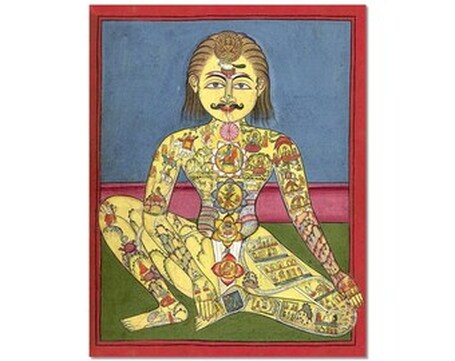 There are subtle channels running in and around the energetic body called nāḍīs. These nāḍīs correspond to the different parts of the physical anatomy. When these nāḍīs become blocked by the three doṣas, energy becomes stagnant and disease arises. Clearing blockages in these subtle channels can help to alleviate all sorts of mental and physical conditions in the body. There are certain vital points described by the ancient Āyurvedic texts where these nāḍīs pass close to the skin. These points are referred to as marman (plural marmāni). So the word “marma” refers to certain vital points and “cikitsā” means treatment. In Kerala, marma is often referred to as varman. Marma means “that which is secret.” Varman means the place where the vital breath and the five elements join to give vitality (va = air or vāyu; ru = five; and aman = joining point). My Experience of Marmāni I have practiced and taught Āyurveda for many years. My teacher originally studied at the Āyurvedic Institute but learned most of what he knew about Āyurvedic body work directly with Āyurvedic doctors in Kerala and later in Rishikesh. I have not generally practiced marma cikitsā because I have not specifically studied all the various points. But I have commonly used more than 27 of the marmāni in both diagnosis and body work. My student, Mochani Devi. has been studying marma cikitsā and is beginning to offer marma cikitsā here at the Soma Matha Center and at Oversoul Healing Center in Charlottesville. I am generally not practicing Āyurveda any more, though I teach some when I can find time amidst my very busy schedule. I am writing this article to help increase awareness of this mystical Vedic form of energy healing which has been largely lost throughout India, but which has been preserved by the siddhas of Kerala in particular. The marmāni are mentioned in several of the major extant texts on Āyurveda and there are many people working to revive this ancient system throughout India. The siddhas of Kerala have preserved and passed down this ancient tradition, teacher to disciple for generations. My experience of the marmāni is mainly energetic. Since I was a young child I could feel the different nāḍīs of the subtle body. As a child, I recall speaking to my physician about the sensation of the nāḍīs in the body. He, of course, was unaware of these subtle energies and suggested that I speak to a psychiatrist about what I was feeling. Later, when talking to Yogis, they confirmed my experiences of these subtle channels. Most people who want to work with such energetic channels for healing must do a lot of spiritual practice to begin to gain awareness of these channels. I was blessed with this awareness at a young age so working with nāḍīs and marma points came naturally to me. Though it will be possible to find the points in relation to the physical anatomy without being able to feel the subtle energy, it may not be possible to accomplish much healing through these points without some subtle awareness. Marma cikitsā is traditionally considered a mantric science or prāṇic science. Traditionally, marma work involved the recitation of Sanskrit mantras to bring awareness to the energy channels and to help to clear blockages and stimulate a healthy flow of energy. The prāṇa of the practitioner is used to influence the flow of prāṇa for the client. Marma cikitsā cannot be practiced by just anyone. The practice requires a heightened awareness of the subtle energy of the body which in most cases requires spiritual initiation to develop. Beyond this, a person must clear the veil of the subconscious through many months or years of disciplined spiritual practice designed to reveal the unconscious patterns of one’s own mind, offering the attachments of egoism into the sacred agni of transformation. When working with spiritual students I often focus awareness upon the blockages in the nāḍīs to help facilitate the release of granthis (spiritual knots) hindering awareness. This is the same as marma cikitsā which is commonly practiced by gurus when having darshan (sight) of their students. This is similar to the practice of nokku varmam in Kerala, by which martial artists disable, injure, or kill a person through sight of the marmāni. Marma and MassageMarma cikitsā is not at all like massage. Whereas massage works on the physical body by applying pressure or otherwise manipulating the soft tissue of the body, marma cikitsā works instead upon the energetic body. For a person trained in marma work, it is not necessary to touch a person’s physical body at all. In marma work, it is possible to accomplish healing through the use of sound, awareness, breath, sight, or intention. Unlike massage, marma cikitsā can be conducted distantly. A competent marma practitioner in Chennai could easily work on the marmāni of a person in Philadelphia. In marma work, it is important not only to be able to locate certain points on the skin where the nāḍīs pass close to the surface of the body. These points are merely points of access or points of focus for our meditation. What is more important is to trace the energy flowing within the nāḍīs to locate blockages. The use of mantra is the most common technique which allows the awareness of the practitioner to enter into the body of the client to identify certain blockages within the channels. This cannot be accomplished by use of the five senses of the physical body but must be done using the higher perceptions which are developed in a dedicated spiritual practice. With awareness of one’s own prāṇic body, it is possible to take awareness out of one’s own body and to go into the body of a client. The prāṇic body is not bound by space and time like the physical body. The same cosmic prāṇa which enlivens one person’s body is in the body of all other living beings also. With awareness of prāṇa, we can literally enter the body of a client and bring a higher meditative awareness into the subtle channels to facilitate the release of stagnant energies contributing to disease. In many cases certain physical techniques will be used also like the application of gentle pressure or herbal substances, but the intention and effect remain the same. History of Marma Cikitsā 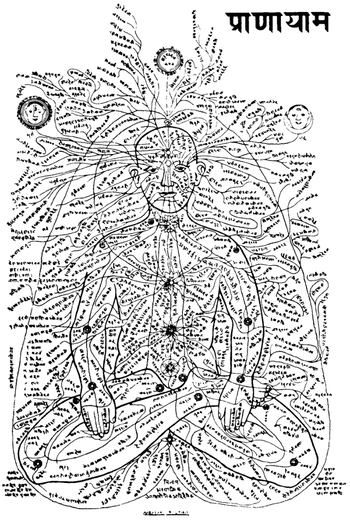 The history of marma cikitsā in India is ancient and fascinating. The knowledge of nāḍīs for healing in Āyurveda is connected to the use of nāḍīs in Yoga to carry awareness into higher realms. One of the earliest texts which describes the marmāni in detail is the Suśruta Saṁhitā. This text refers to these vital points mainly in connection to the peril arising when the points are injured and the specific protocol involved in treatment of injuries to specific marmāni. The earliest texts on marmāni, refer to 107 marmāni with the mind as a 108th. In practice in Kerala today, there are over 250 marmāni commonly used, with countless others used occasionally. In some cases, these points correspond to the points used in the Chinese system of acupuncture. In other cases, these points are distinct and unique to the Āyurvedic system. It is said that the system of acupuncture was in fact first brought to China along with the martial arts from India by the Buddhist monk, Bodhidharma. There is a 3,000 year old Sanskrit text on the Āyurvedic system of acupuncture called Sūcī Veda. The practice of acupuncture has been all but lost in India now. But the use of herbs and mantras for treatment of the marmāni is much more common. In the times that the Buddhists were invading India and forcefully converting people to their faith, the surgical traditions of Āyurveda were seen by the Buddhists as bad. Since Buddhism valued ahimsa (non-violence) so highly, the surgical system of Āyurveda, along with the needling techniques of sūcīveda, gained disapproval from Buddhist invaders because they caused harm in order to heal. At this time, many texts were burned by the Buddhists and many surgeons and acupuncturists were sentenced to death. The hypocrisy of killing surgeons to prevent harm is hard to overlook, but this is the unfortunate nature of fundamentalism which turns well-intentioned people into brutes and causes much harm to society. Unfortunately, most of the texts on Āyurvedic surgery and Marma cikitsā were lost at this time. Later, the system of marma cikitsā faced further scrutiny and repression under the British Raja in India. The physicians trained in marma could touch a point on a person’s body and make them unconscious or revive them from a state of unconsciousness. They could touch a point and paralyze a person. They could touch certain points and impair a person’s speech or vision. Certain points could be touched to inflict injury or death. This knowledge was seen as a great threat by the British rulers and the practitioners of marma cikitsā were executed or their fingers were cut off to prevent their practice. A few martial artists went into hiding and preserved the knowledge of marmāni, along with a few physicians in Kerala who were granted protection by Indian Rajas. After British rule ended, a few of these people who had preserved the ancient secrets came out of hiding and began teaching others. The knowledge of marmāni is still carefully guarded due to its great potential for inflicting harm and few really know the practice in its most authentic forms. The Application of Marma cikitsā in India and AbroadToday in Kerala, where knowledge of marma has been preserved the best, marma work is typically accomplished with the use of mantra and other techniques of meditation to center consciousness along with pressure and the application of special herbal pastes (kalkas) in addition to traditional herbal oils (tailams). These substances are applied topically along with gentle pressure and awareness. For the best results, herbs and other substances should be empowered using mantras. The spirit of the plants should also be contacted and supplicated for help with the healing work being done. Many teachers of marma in the West are recommending more commonly available substances for marma work like gemstones, tuning forks, or essential oils. Though it is possible to affect the marmāni with these things in addition to colors and other sounds and other minerals and objects, each of these techniques carries with it certain drawbacks compared to the use of herbs prevalent in Kerala. Like herbs, gemstones possess powerful specific energies which can be used for healing specific conditions. There are certain stones which are most suitable for each doṣa and for specific organs, tissues, and conditions in the body. Though there is some description of the rasa, vīrya and other healing effects of a few gems and minerals in the Rasaśāstras (texts on alchemical medicines), the specific healing effects of most of the thousands of gemstones available today remain mysterious to most people. There are accounts of the healing properties of gemstones in many Western new age books, but accounts are conflicting and few provide the depth of understanding needed to apply gems for the treatment of specific conditions. With herbs, it is possible to tailor treatments to the specific needs of an individual according to the properties of herbs described in detail in the various texts on Āyurvedic pharmacology. Tuning forks and singing bowls possess the drawback that one sound frequency emitted by any implement will have specific effects upon the doṣas which will be very difficult for all but the most intuitive healers to determine. A tuning fork which makes one note, will treat one specific type of condition quite effectively while remaining ineffective in other conditions, or even worsening these conditions. Essential oils also present the drawback that they are not doṣa specific. Though many people use essential oils according to the specified effects of the herbs from which they were produced, this is a flawed approach. Because essential oils are a concentration of the most volatile and fragrant portion of an herb, they all possess similar properties to the fragrant herbs of the eladi gana. Despite what various modern sources may state, it has been our experience that all essential oils will tend to aggravate vāta and pitta in excess. Some people in India today who have not been trained in the traditional ways, are also working to revive the science of marma. In the absence of many good texts on marma published in India, many of these Āyurvedic doctors have been heavily influenced by Western authors. This provides the advantage that new ways of working with the marmāni are being developed which could help to expand the scope of marma cikitsā. This also provides the drawback that it leaves out the ancient wisdom of the Sages inherent in the traditional ways which have been passed down for generations. In practice, many various techniques have been used through the generations in India to work on marma points. In addition to the use of needles and kalkas and tailams, herbal steams have commonly been applied to the marmāni. Calamus, turmeric, and other herbs have been burned close to the points as well, similar to the use of mugwort and ginger in the Chinese practice of moxibustion. Beyond this, certain mantra, tantras and meditations are commonly employed to effect the flow of prāṇa through the nāḍīs. Many practitioners of marma know techniques to use their prāṇa (breath) to stimulate the flow of prāṇa through the nāḍīs of people they work with. With mantra and puja and prayer always being performed before marma work begins, it is not uncommon for the Devas to assist the practitioner of marma from the inner realms as well. It is certainly possible to work on the marmāni in many different ways, and no particular modality is wrong. Many practitioners are doing good work with essential oils and tuning forks despite the potential drawbacks of these methods. It is most important to do effective marma work that a person has a strong and clear vital force within themselves and an awareness of the blockages in their clients. In this case, any substance used becomes like amrita for healing, and any point on the body which is focused upon becomes a marma point. Marma Cikitsā and AccupressureMany people liken marma cikitsā to acupressure or reflexology. This is understandable because both systems accomplish healing through specific points and both systems do not use needles as in acupuncture. The similarities end here. In reflexology, intense pressure is applied to certain points on the feet or hands in particular. Though it is safe in certain cases to apply firm pressure to the marmāni, in many cases, the application of firm pressure to the marmāni can lead to injury or death. A detailed description of the harm which can be inflicted with too much pressure to each of the 108 marmāni can be found in the Suśruta Saṁhitā. In marma cikitsā, we must be much more careful. Typically gentle pressure is used, with the specific amount of gentle pressure being determined by the doṣa affecting the nāḍī. In reflexology, the maintenance of pressure leads to a release of energy which can be noticed by a relaxing of the soft tissue at that spot. In marma cikitsā, physical touch is used more to direct energy within the inner channels. Reflexologists are trained to identify points requiring attention due to muscular tension around that particular point. In marma cikitsā, the muscles around a point may or may not be sensitive to the touch because these points are used to grant access to certain distant blockages along the same nāḍīs. Chakras and Marmāni Many people wrongly associate the marmāni with the chakras. The system of chakras was originally revealed to help facilitate the flow of awareness into higher realms of consciousness. The system of marma was revealed to aid in healing the physical body. Most of the marmāni are contained within the astral body (sūkṣma śarīra) - though they are located with reference to the physical body, but the chakras are within the causal body (kāraṇa śarīra). The chakras do not relate to any part of the physical anatomy and it is perfectly possible for the kundalini to remain dormant and the chakras inactive and for a person to have excellent health. The use of chakras for healing was imagined by the Western scholars who struggled to understand the true spiritual application of the chakra system. This was never the intention of the Sages, but an addition of the Western thinkers. None of the traditional texts on Āyurveda make any mention of the use of chakras for healing. For healing of the energetic body, instead the system of nāḍīs and marmāni is used in Āyurveda. This system is much more complex than the Western system of seven chakras, but its complexity allows for precise healing work to be done. There are certain marmāni which people commonly relate to the seven chakras most prevalent in the West today. It should be noted that gurus in India have been aware of and used 100’s of chakras throughout the body in spiritual practice. The system of seven chakras was popularized by Western scholars in the late 19th century. Most of the marmāni which are related to the 7 Western chakras are located on the front of the body and are wrongly associated with the chakras located at a similar place within the spine. Many people have developed the misconception that the manipura chakra is located at the naval. This chakra is located within the spine around the height of the naval. This misconception has likely been inspired by diagrams of the location of the chakras which depict a sitting person from the front. From this misconception, it has been deduced that nābhi marma (located at the navel) is connected to the manipura chakra. Many practitioners wrongly assume that this point can be used to cure any condition the manipura chakra is claimed to treat. We must remember that chakras were never intended by the Sages to treat any condition, but instead to grant us access into spiritual realms of awareness. These healing attributes of chakras come not from the enlightened awareness of the Sages, but the imagination of Western mystics struggling to understand the true application of the chakras. There are many specific uses for the nābhi marma described by the traditional Āyurvedic literature. The tradition of healing with marmāni, unlike the tradition of healing with chakras, is reliable, having its origins in the enlightened awareness of the Sages. The Application of Marma CikitsāEven if a person does not have knowledge of the Āyurvedic techniques of nāḍīnidāna (pulse diagnosis), sparśana (palpitation), darśana (physical inspection), and praśna (questioning), one who is trained in marma cikitsā can determine the doṣas contributing to a condition through the marmāni themselves. Touch of certain marmāni with knowledge can aid in the diagnosis of specific conditions. A tenderness will be noticed around specific marmāni in certain conditions; like hṛd marma cardiac problems, the yakṛt marma for liver problems, plīha marma for the spleen, spṛkka marma for the kidneys, or indrabasti for chronic constipation. Āyurvedic doctors in India often use palpitation of the marma to confirm diagnoses.
To properly treat any marma, it is useful to know where there is a blockage of energy along the connected nāḍī. For this, great awareness of the subtle body is required. Even without this awareness, it is possible with mindfulness and practice to determine which doṣa is causing obstruction to that nāḍī by touch of the marma itself. This technique also requires some subtle awareness of energy because unlike the practice of acupressure which feels for tension in the soft tissue of the physical body, this technique requires awareness of tension within the prāṇic body of a person. This is subtler and may or may not be accompanied by corresponding tension in the soft tissues of the physical body. Generally it is necessary to study directly with a teacher to be able to effectively employ these methods. With practice, we can bring awareness to the prāṇa flowing through a nāḍī. Tension in the flow of prāṇa through the nāḍī will be noticed when there is a need for treatment of that nāḍī. Even without knowing what condition a person is affected by, it is possible to know which marmāni require treatment by bringing awareness to the nāḍīs. When we gently touch a marma, pressure is felt within the nāḍī. If this pressure is released upon very gentle pressure, it is understood that the obstruction is caused by vāta doṣa. If tension is released with slightly firmer pressure, it is understood that pitta is the cause of imbalance within the nāḍī. If deep pressure is required to feel a release of tension in the nāḍī, it is understood that kapha doṣa is the cause. Of course, even this “deep” pressure must be relatively gentle for the safety of the person. Very deep pressure is never required when working with marmāni because we are working on the energetic body and not the physical body. With knowledge of the doṣa causing obstruction to the nāḍī, it is possible to devise an effective treatment. doṣa specific herbs are used to pacify the doṣa / doṣas in question. If there is knowledge of the specific disease conditions, or the organs or tissues or channels affected, herbs with specific properties to alleviate these conditions can be employed for the best result. Mantras used should be specific for the doṣa and condition in question also. The pressure and duration of treatment also should be tailored to the specific requirement of the doṣa giving rise to imbalance. vāta requires the most gentle pressure and shortest duration of treatment. The light and airy and changeable nature of vāta is easily influenced and benefits from gentle and short treatments but is aggravated by firm touch and long treatment times. Pitta benefits from a moderate pressure and duration of treatment. Kapha, which is very slow and heavy, requires the firmest pressure and longest duration of treatment. This is required to achieve the needed stimulation to break through the dull stagnation of that particular doṣa. vāta requires the least amount of herbs and large amounts of oils to counter its dryness. Pitta benefits from a moderate amount of herbs and oils. Kapha requires the stimulating effect of large quantities of herbs and very little oil. The touch in many types of body work is designed to achieve a certain effect upon the tissues of the physical body. Touch is different in marma work. We must remember that marma cikitsā is designed to stimulate the flow of energies in the subtle body and that physical touch is not required at all. There are martial artists in Kerala who can kill a person by gazing at a marma. There are healers there who can heal disease by looking at the marmāni as well. When therapeutic touch is used in marma treatments, it is designed to stimulate the flow of prāṇa. In abhyanga, the motions of the hands are designed to help apply herbal oils and open the pores so that those oils can penetrate deep into the muscles and tissues of the body. In this case, it is the herbs and oils which do the work; not the practitioner. In the case of marma cikitsā, touch is designed to stimulate a healthy flow of prāṇa through the nāḍīs. Beyond the differences in pressure described above, different types of touch are used to accomplish different effects to the flow of energy in the body. Upward movements stimulate udana vayu whereas downward movements stimulate apana vayu. Circular motions can be used to increase vyāna vāyu. Upward movement can increase alertness and bring awareness into higher spiritual states. Downward movements are calming and grounding. Clockwise movements are used to increase strength and nourishment. Counter clockwise movements help to facilitate release and purification. Movements from the extremities toward the heart are tonic whereas outward movements are cleansing. Movements from the right toward the left are more cooling whereas movements from the left toward the right are heating. These and other such motions are done to influence the flow of energy in the subtle body. Knowledge of the specific type of motions most useful can be discerned by knowledge of a person’s doṣas and conditions. However, we can also feel the movements of energy within the subtle body. Those who can feel the subtle spiraling and pulsation of energy in the subtle body can follow these movements with their awareness in order to facilitate release. This technique is even more powerful because it follows the energetic body’s natural process of healing. In this case, the energy in the body will often be noticed initially to move in the opposite directions than those specified for healing above. By following these movements within the body, pressure builds which facilitates release. After this, the energy of the body will naturally move in the appropriate ways for the desired healing effect. For example, if a person has skeletal degeneration of the patella caused by vāta doṣa, clockwise motions would help ease that condition. However, if we bring awareness to the flow of energy at the jānu marma, it would often be noticed that energy is spiraling in a counterclockwise direction. By following the flow of energy with our awareness in a counterclockwise direction, we will observe a pulsation at the area of the knee. As pressure builds and the subtle pulsation intensifies, energy will be released through the body of the client and through the body of the practitioner. This process may need to be practiced repeatedly until certain resistances are released. Once sufficient release is facilitated, it would be noticed that energies start to move naturally in a clockwise direction as would be desired for the needed healing effects. This approach is more gentle and facilitates deeper healing, but it requires greater awareness of subtle energy and much more practice. It is an advanced technique utilized by the siddhas who have great awareness of the subtle energies within the body. Really all that is required to facilitate the release of blockages in the nāḍīs is to bring higher awareness to those obstructions. Whether we utilize higher states of awareness accessed through meditative practices or rely upon the heightened awareness of the herb plants for healing, the effect is the same. It is a normalization of the flow of prāṇa in the body which improves vitality. With practice, we can see these obstructions in our own energetic body and within the bodies of others. With detached awareness, all obstructions are cleared. - Gananathamritananda Giri Several people have contacted Swamiji expressing concern about a few recent articles published by major news sources in addition to several pieces in recent years on NPR which have insinuating that Hinduism is a radical and violent religion posing a threat to the liberty of Americans. Swamiji's Statement:We are disappointed to see several major news sources have recently published insinuations that radical right-wing Hindu organizations are gaining ground in America and posing a threat to the US. These articles either claim or insinuate that radicals are becoming mainstream in Hinduism and that Hinduism poses a threat to Americans' freedom. No fewer than three defamatory articles have been published in the past month by major news outlets with several others published in previous months. Huff Post Article Vice Article The Intersept Article This comes in the Holy month of Ashvin when the Biden administration received criticism from the Hindu community for doing away with the spiritual observance of the Hindu festival of Diwali at the white house. The White House celebration of Diwali was started by President Obama and continued by President Trump. Though Biden hosted the largest celebration of Diwali in White House history this year, he is the first President not to invite a Hindu priest to offer prayers at the White House as a part of the observance of the religious festival. Many Hindus are asking if the Biden administration was trying to de-Hinduize Diwali. Is the message that Hindu Americans are supposed to take from all these events that they are welcome in America so long as they assimilate and leave behind their Hindu culture and identity? Diwali is one of the most important Hindu religious festivals celebrating the triumph of the light of peace and love and wisdom over the dark forces of selfishness, egoism, ignorance, and hatred. We find the story written by Rowaida Abdelaziz and published by the Huff Post in particular quite concerning. This article compares Hindu Nationalism to "white national extremism" and implies that violence and hate are the dominant political position of Hindus. The article quotes South Asian historian and outspoken opponent of Hinduism Audrey Truschke “Hindu nationalism is threatening American multicultural values. If you like diversity, if you believe people who are different and who follow different religions should live together and that we are all Americans, Hindutva is a threat to that, and it is growing. It is not going away. It’s likely to get worse.” Hinduism is and always has been a very peaceful and arguably the most tolerant religion on the planet. Hindu scriptures urge people to practice ahimsa (non-injury to living beings) as the highest spiritual ideal, and foster tolerance between faiths by proclaiming "Truth is one. Paths are many." It is the Hindu ideal of nonviolence that inspired Mahatma Gandhi toward the nonviolent resistance of British oppression which led to one of the very few nonviolent revolutions in recorded history. If Hindu Nationalists are working to help return rights to Hindu people to practice their religion that were lost in the time of Colonial rule, this poses no threat to Americans, unless these Americans have a hidden agenda to destroy the Hindu culture and convert the Hindu people to their Christian beliefs and traditions. In practice, the indigenous Hindu people of India have not enjoyed all the same legal rights as members of other faiths for hundreds of years. These types of fanatical reports may help increase the audience for news outlets, but they also affect the lives of millions of people. It is important that such stories are presented accurately and also delicately with regaurd to the difficult situation of immigrant communities who routinely face a great deal of discrimination and abuse. Hindus in America are an extremely marginalized group, without even considering the numerous challenges faced by Hindus historically in India. Though Hinduism is the fourth largest religion in America today with a population of around 3 million, this is only about 1 percent of the US population. Hinduism as a faith is not generally well understood by the American people. The scholarly writings on Hinduism derive a great deal of inaccuracy from the early Western writings on Hinduism authored by Chrstian missionaries with the intention to demonize the Hindu faith and convert the Hindu people to Christianity. The American education system still tends in many cases to present widely inaccurate and derogatory descriptions of Hinduism. The faith is often inaccurately portrayed in the media in the few cases that it is represented at all. It is shameful to see news outlets publishing stories which will likely serve to increase the many misunderstandings about the Hindu faith without having done their due diligence to evaluate the accuracy of such stories or the hidden agendas of the people they are reporting on. Indian Americans face a great deal of harassment, abuse, and discrimination, for the darker color of their skin, for language and cultural differences, and for their religion. These articles which warn of the growing threat of violent and intolerant Hindus in America present a very inaccurate picture of Hindu Americans by leaving out many important details. For example, two of the articles cited above refer to cyberbullying and online threats experienced by Audrey Truschke. The articles state that this is indicative of a growing number of Hindu radicals trying to silence critical scholarship and to force others to adopt Hindu views. Nothing could be further from the truth. Hinduism is undeniably one of the most, if not the most, tolerant religion on Earth today with a long history of welcoming members of other faiths. Unlike Mrs. Truschke's Christian faith, Hinduism does not proselytise and has no traditional methods for conversion. True Hindu nationalists are simply seeking to regain the dignity and rights taken away during Colonial rule of India which are still lacking in many ways. There is no agenda to dismantle, harm, or even influence the peaceful coexistence of other religious traditions. Hinduism sees each religious path as true and valid, and so Hindus feel no need to convert others to their ways. After centuries of governance from foriegn powers that have tried to ridicule, outlaw, and destroy the Hindu faith, many Hindus are understandably in favor of a government which protects their right to exist alongside other traditions which are not always so tolerant. These articles leave out the detail that Mrs. Truschke has a long recorded history of making racist, defamatory, and insulting statements against Hindu people and the Hindu faith. She claims that her attacks are aimed against a fundamentalist element within the Hindu tradition, but turns around and asserts that fundamentalism and violence are becoming predominent in mainsteam Hinduism and insults Hindu people and Hinduism as a faith. Mrs. Truschke's true motives for her attacks on Hinduism become clear in the light of the work of her husband and father-in-law. Mrs. Truschke's father-in-law is the pastor of the First Baptist church in Monterey, California. He and Mrs. Truschke's husband travel to India as missionaries to try to convert Hindus to their Baptist faith. Mrs. Truschke's image also appears on the church's website. This is a textbook example of colonization. Mrs. Truschke's tactics are copied from the playbook of the British colonists: spreading disinformation and insulting the indiginous Hindu people of India in order to demonize their faith so that they can be "civilized" and converted to the superior views of the "enlightened" Christians. When Mrs. Truschke uses insults like referring to Hindus as "cow piss drinkers" she is employing a rhetoric which has been used for centuries by the British colonists in their efforts to denigrate and dismantle the Hindu faith. She makes her own agenda clear to anyone paying careful attention, though the Huff Post clearly did not do their research before publishing this story. Yet Mrs. Truschke presents herself as a liberal and a supporter of religious freedom and many have believed these claims. It does not matter if we favor the Christian views of the colonial era or the modern day liberal political views of American Christians; whenever one culture presumes that their views, customs, and traditions are superior to those of another culture and they try to impose those views upon the indiginous people of a foriegn country, this clearly constitutes attempted colonization. When this is done so through deceptive means and through the denigration of a people's native customs and religion, this is extremely unethical. Mrs. Truschke's actions speak louder than her words and reveal her true identity as a wolf in sheep's clothing.
These sorts of articles which seem to be trying to educate Americans of the threat Hundism poses do not even tend to get the basic facts about Hinduism right. In a piece for NPR from April 22, 2019, Lauren Frayer, NPR correspondent for South Asia, states that Hinduism is a polytheism. This is not true. There are four major denominations of Hinduism today; Shaivism, Vaishnavism, Shaktism, and Smartism. All four of these denominations believe in One Supreme Divinity, so are by definition monotheistic. The British Colonists were the first to use terms like "polytheism" to describe Hinduism in an effort to relate the Hindu tradition to the already defamed Pagan traditions of pre-Christian Europe. With critical scholarship on Hinduism and Indian history increasing in America, one would think that such misconcpetions would be quickly identified and eliminated from academic texts. But these sorts of misconceptions remain commonplace, even for Western scholars on Hinduism. The question people should be asking is, how can we trust articles which cannot even seem to get the most basic details correct? The clear answer is that we cannot trust such articles. Unfortunately, the American public does not know enough about Hinduism or Indian history to understand when news outlets are presenting inaccurate or misleading information. We as Hindu Americans have often experienced ourselves and our loved ones being exposed to all sorts of harassment, bullying, threats, and violent attacks and can understand how difficult it can be to face such adversities. We can understand and empathize with the hardships of cyberbullying Mrs. Truschke has experienced. Unlike Mrs. Truschke who has invited this sort of negative attention by insulting people's indiginous culture and religion, Hindu people in America must face these difficulties, without provocation, simply for being different. We admonish the insulting and anti-Hindu statements of Mrs. Truschke. There are simply more kind, more mature, and more effective ways to communicate. This insensitive, hurtful, and slanderous sort of speech is unacceptable, especially when it comes from a respected educator whose race and religious affiliation put her in a position of privilege and these comments are directed toward a marginalized minority community. We also admonish the actions of those who have sent insults and threats to Mrs Truschke. This is an action which makes the perpetrators no better than her. Receiving threats and insults online does not however have any clear correlation to the growth of a radical and violent Hindu element in the US as these articles assert. Cyber bullying as well as threats against college professors are increasingly common. Students are experiencing a great deal of cyberbullying as well. This is an unfortunate element of American society today which is regrettably experienced by many college professors who do not insult other cultures or religions and who have not commented upon Hinduism at all. The use of these alleged threats and insults as evidence for a radical movement in the mainstream tradition of Hinduism is preposterous at best. While the assertation that any threats received by Mrs. Truschke are indicative of a growing movement of radical Hindus desiring to strip away the liberty of Americans is ridiculous, the evidence of hate crimes aginast Hindu Americans is clear. The FBI's publication of hate crime statistics shows a general increase in hate crimes against Hindus in America in recent years. The Hindu American Foundation has published a brief history of hate crimes against Hindus in America, listing dozens of documented cases of hate crimes perpetrated against Hindus. The instances of violence against Hindus in America have steadily increased since 9/11. I, myself, was seized by an angry mob in Time Square shortly after 9/11 when I was on my way to a Temple consecration in Pennsylvania and wearing my dhoti (robes) and tilakam (forehead markings). I was physically detained by a large group of angry men yelling death threats and saved by a bus driver who helped me to escape my attackers and hid me in a bus driver's lounge until I could safely depart the city when my bus arrived. I have heard many countless stories from Hindu people I know, many of whom were not so lucky as I. Most of these cases were never reported to the police - or in certain cases were perpetrated by the police themselves - and so these countless stories will go unrecorded. I have personally witnessed many cases of harassment, abuse, and descrimination - including mocking, insulting, physical attacks, denial of rights, imprisonment, and murder. Hindus routinely experience greater difficulty getting jobs, and being approved for loans or rental contracts, and Hindu organizations commonly experience difficulties to get permits to operate legally due to bigotry. We have shared on our facebook page multiple news articles about Hindu Temples facing discrimination. Our own Temple, after acquiring a property, was told by conservative Christian neighbors that "we had no legal rights because we practiced a false religion." The neighbors filed many complaints with the county and subsequently our permit application to enable us to pray there was denied by the county. Meanwhile our Christian neighbors were permitted to hold regular bible study groups and prayer gatherings without permits.
Hindus in India have faced terrible violence, oppression, and persecution at the hand of both Christian and Muslim invaders. They have witnessed the decimation of their cultural identity and the desecration of thousands of their sacred Temples. Today in India, attacks on Hindus by Islamic terrorists are increasingly common. Many Hindus are understandably concerned. There is a small but vocal group of radical Hindus today who speak against Islam and who advocate for violence. Though the frustrations of these people can be understood, their approach is unacceptable. The vast majority of Hindus respect Islam as a valad spiritual path which also teaches peace as their own tradition does. We must be careful not to group a whole religion in with a few radical fundamentalists. We spoke up about this point in defense of the great tradition of Islam after the 9/11 attacks in the US when many Americans became fearful and angry toward Muslims. The refusal of media outlets to be careful to portray Islam as a peaceful religion and to make a clear destinction between radical terrorists and mainstream Islam fueled the ignorance and fear of the American people and helped to increase the anger which lead to many misguided violent acts of rage and retaliation. In the first month after 9/11, 300 instances of discrimination and violence agianst Sikhs were reported by the Sikh Coalition including the murder of two Sikhs in Elk Grove, California whose assailant mistook them for Muslims. This is a good example of the widespread danger inherent to this sort of reporting. In a time when hate crimes against Hindus in the US are increasing, this type of reporting is extremely irresponsible and dangerous. In normal cases, for the most privileged members of society, defamatory remarks can be quite damaging. For underprivileged and marginalized immigrant communities, such remarks can prove deadly. We do not associate mainstream Christianty with radical hate groups like the Nazi Party or the KKK though they were both self-proclaimed Christian organizations. We understand these groups to be radical deviants not representative of the peaceful faith of Christianity as a whole. We must be very careful to make the same distinction when considering the few isolated radicals within the Hindu or Islamic faiths. These radicals are certainly not representative of either faith as a whole. But people are not well educated on these faiths, and the glaring deficiency of the educational system does not help, so reporters must take great care to ensure that the stories they write will not incite hate crimes against innocent and upstanding citizens. What can we do?In response to these articles, we will be publishing a series of articles about Hindu beliefs and practices with reference to popular Western criticisms of the Hindu faith along with insight into the historical origins of these criticisms. Though we do not have the platform that the Huff Post has given Mrs. Truschke to reach tens of millions of readers, or even the platform that Rutgers University provides to her to spread her hateful comments against Hindus, it is our humble prayer that these articles may help to increase awareness about Hinduism in America and to help to set straight a few of the most common misconceptions about the Hindu faith. When there is ignorance, often people respond with fear and hatred. When there is knowledge, people can be understanding, tolerant, and accepting of the diversity which makes America great. We hope that getting this information out will help increase acceptance of the great Hindu faith, which has contributed so much to American culture, but also help to inspire tolerance, understanding and promote the acceptance of the Islamic faith, the Sikh faith, the Jain faith, the Buddhist faith and all the religious traditions of all religious minorities and immigrant communities. Each of these communities and many others unmentioned have faced horrible abuse and discrimination and today in America struggle to enjoy the rights that white Americans take for granted. May these communities come together, having experienced similar hardships, to support one another in creating an atmosphere of tolerance and brotherhood for all humanity. We encourage Hindu people not to argue with these radicals intent upon spreading hate but to be tolerant, patient, forgiving, and loving in order to show these people the true meaning of our great Hindu faith. Last year, I was approached by the organizers of the Dismantling Global Hindutva conference and asked to speak against my Hindu faith. I did not respond. However often we are provoked by malicious forces intent upon spreading hate, we must strive not to respond. For us to repay harassment with punishment can only serve to increase the violence and hate in the world. There is too much violence and hate in the world today. We can only balance this by practicing love and compassion. We should be proud to be Hindu Americans and we must work to educate people about the beauty of our ancient, vast, and influential tradition. We must not be discouraged. The brave Hindus who walked alongside the Great Mahatma Gandhi often faced terrible abuse at the hand of their British oppressors. Yet dharma prevaled. By the grace of God, these fine exemplars of our faith remained calm and peaceful and arose from their beatings free from the chains of colonial rule. Things have improved a great deal for Hindu people since that time, but we are still facing many overwhelming obstacles. I have been insulted, mocked, and physically attacked on numerous occasions for wearing my dhoti and tilakam in public. God gave me strength to alway respond with calmness and compassion toward my attackers. For this reason, and by God's grace, these people were swayed toward a better view of Hinduism. I will happily be beaten many times more if it might help improve conditions for my Hindu brothers and sisters. Because I was born in America to white parents, if I take off my dhoti and tilakam, I enjoy a certain privilege in America which is simply unavailable to most of my Hindu brothers and sisters. I cannot imagine the terror of knowing that such a situation is unavoidable. Yet I implore you all to remain strong and to remain faithful. If we can continue to follow the example of those brave souls who cast off the chains of British rule, and fight to preserve dharma by preserving our own inner peace and spreading peace in the world, understanding of the Hindu faith will increase in America and conditions will assuredly improve.
Gananathamritananda Giri Peethadhipati (Spiritual Director) Soma Matha Spiritual Center Schuyler, Virginia Nov. 1st. 2022 A murti of Lord Ganesha being cleaned with mud from a sacred river and bathed with various substances. Before these rituals are performed the bimba is physically cleaned with various substances like mud, and ash, and crushed bananas, and tamarind paste in a ritual called mūrti samskāra. This helps remove physical impurities from the carving and shipping and energies from the stone carver, those who have moved the image, and the priest conducting the rituals. Various other rituals of purification are conducted also. Notably, a series of adhivāsam rituals is conducted, submerging the statue in various substances. Jalādhivāsam is submerging the image in water. Kṣīrādhivāsam uses milk. Pañcagavyādhivāsam uses the five sacred substances from the cow (ghee, yogurt, milk, urine, and dung). Dhānyādhivāsam uses various grains like wheat, rice, barley, sesame seeds, and the nine grains associated with the nine Planets. Ratnādhivāsam uses the nine gems associated with the Planets and along with semi-precious gems and various metals and minerals including brass, copper, gold, silver, mercury, arsenic, sulfur, lead, tin and others. Puṣpādhivāsam uses various sacred flowers and herbs. Śayyādhivāsam involves laying the statue down on a comfortable bed and covering it with blankets. These offerings purify the image and help Divinity to come to dwell within it. Various colorful maṇḍalas are drawn and duly worshiped, and various homa (fire ceremonies) are conducted for a variety of purposes. There are many various rituals performed as a part of the purification and consecration (or reconsecration) of sacred Temple icons which require weeks if not months of preparation and the donation and participation of dozens of people to accomplish. The full range of the rituals is far beyond the scope of this article. Adhivasas for an image of the Goddess: Jaladhvasa, Kshiradhivasa, Dhanyadhivasa, and Ratnadhivasa. Preparations for the Netronmīlanam RitualThe Netronmīlanam ritual itself is begun with Netronmīlana homam, a fire ceremony conducted to empower the ritual and to begin the process of opening channels to the inner realms. Various sacred herbs are used for the homam. Sattvic Ayurvedic herbs with nervine properties help to calm the mind and stimulate spiritual awareness like calamus, brahmi, amalaki, bhringaraj, sandalwood, costus root, spikenard, tulsi, sugarcane, darbha grass, black pepper, kakkola, netrabala, sage, angelica, and turmeric are used. Herbs which are good for eyesight and increase vision and perception in general and used also like triphala, dashmula, bhringaraj, netrabala, ginger, gudduci, licorice, lotus, carrot seed, dill seed, chamomile, and shatavari. Herbs which open channels to the inner realms are also used like turmeric, bhringaraj, brahmi, calamus, sandalwood, agar, camphor, tulsi, shalaparni, cardamom, sweet grass, cedar, juniper, comfrey, and shaileya. Other substances like goat’s milk, honey, limes, pomegranates, bananas, tamarind, and rice pudding (charu) are offered as well. Various gems and minerals are used in the offerings also like gold, silver, copper, diamonds, yellow sapphire, blue sapphire, gomed, cat’s eye, tin, agate, and pearls. Gold, silver, copper, diamond, yellow sapphire, and agate are also used to produce various implements for the rituals also. The homams are conducted with Vedic and Āgamic mantras related to spiritual vision. The netra mantra, “vauṣaṭ” is important and used often in these rituals. During the homam, ghee and honey to be used in Netronmīlanam is blessed and empowered for the ceremony by offering a small portion into the sacred fire. We are further empowering the rituals by conducting a series of homams to be performed after the conclusion of a series of eye-opening practices.
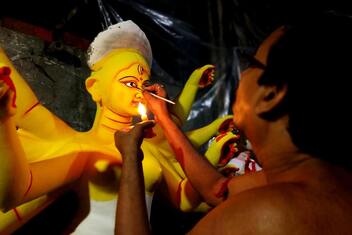 Netronmīlanam is a special ceremony performed as a part of rituals of consecration for Temple mūrtis (icons). Through these rituals, channels are opened to the inner realms and powerful spiritual energies established. A normal space becomes sacred, and mere statues (bimbas) or paintings / images (citrapaṭa) becomes sacred embodiments for Divine shakti. Prāṇapratiṣṭhā is the name for the “life-giving” ceremony through which a mere stone statue, called a bimba, becomes a living, breathing, icon, called a vigraha or mūrti. 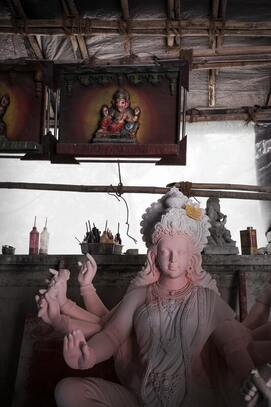 The word idol is often used to describe these sacred temple images. This word was introduced along with its many negative connotations by Christian missionaries with the intention of weakening the Hindu traditions. Vigrahas are not idols, because idol worship implies that people are worshiping something less than God as God. Hindu theology teaches that God pervades all of creation. Sacred temple images are not viewed as God, but a point of focus for people’s prayers and meditations, and also powerful sacred object which hold spiritual energy and act to help open channels to the inner realms for the Devas (Gods / Angelic beings) to confer blessings upon souls in the physical realm. They are created with special imagery which uplifts human consciousness toward righteous thoughts and deeds which help bring about spiritual awareness. If we must use an English word to describe vigrahas in Temples, the word icon, which is also used by Christians for sacred images, is more appropriate. Kumbhābhiśekam is the name for the ceremonies conducted to empower sacred images. Water is placed along with herbs and gems in sacred water pots called kumbhas. They Lord is worshiped in the waterpot, and through this process the water becomes imbued with Divine shakti (energy). Special maṇḍalas (mystical diagrams) are drawn with colored powders and energized with mantras to further empower the process. A series of yajña rituals is performed, offering various herbs, foods, fruits, flowers, ghee, and honey into the sacred fire, to remove negative energies and help manifest spiritual energy which is stored in the water. After the water is energized, it is carried to the Temple with pomp in a procession before being used to bathe the vigrahas. Bathing the deity is known as abhiśekam, and through this process, intense spiritual energy generated through the many rituals is transferred to the Vigraha. Netra means “Eye.” And Unmīlana means “becoming visible, unfolding, or opening of the eyes.” After various rituals to purify the sacred space of the Temple and the images, Netronmīlana homams are performed to prepare for the ritual of Netronmīlanam. The ritual is performed to open channels to the inner realms so that the Devas can see the devotees in the Temple and hear their prayers. It is also performed to heighten the spiritual awareness of the Temple devotees of the sacred presence of the Devas. Normally people have trouble to see the Devas, because they dwell in the inner realms. The Devas likewise have trouble to see and to help the people. There is a veil between realms which obscures communication and interaction. The ritual of Netronmīlanam helps to increase visibility between realms in order to help inform and empower the efforts of the Devas to bless the people, and to increase human awareness of and receptivity to the blessings received.
Learn More About The Netronmīlanam Rituals Contribute to Support our Efforts to Perform Eye-Opening Practices and Ceremonies 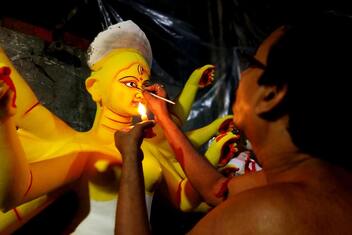 A shilpin (artisan) painting the eyes on a Temple Icon A shilpin (artisan) painting the eyes on a Temple Icon The Netronmīlanam ritual for the deities is performed at an auspicious muhurta (astrological timing). Until this time, the pupils of the eyes of the statues remain uncarved. At the time of the ritual, shilpis (temple stone carvers) carve the pupils, which are then blessed by priests with Vedic mantras for spiritual sight. Painted images, are completed by painting the pupils of the eyes. This process is performed behind a veil so devotees present do not send negative energies through glances (drishti) which could hinder the process. This also helps protect the devotees from the intensity of the ceremony which could stimulate experiences which could be overwhelming. The priests and shilpis are specially trained and prepared to endure the intensity of the rituals. In a small dose, spiritual energy acts like medicine. Like medicine, it can be more like a poison in excess. Just like people have built an immunity to poison by regularly ingesting small doses, the priests and stone carvers expose themselves to intense spiritual energies under the guidance of a guru to acclimate themselves to the intensity so they can endure the powerful rituals for the benefit of humanity. For the ceremony, honey is kept in a golden cup, ghee is kept in a silver cup, and anjanam is kept in a copper cup. Before these substances are placed into the cups, different deities are invoked into the cup and worshiped with various offerings (puja upacharas). The Sun is invoked into the gold cup; the Moon into the silver cup; and Agni into the copper cup. After the vessels are blessed in this way, the honey, ghee, and anjanam are blessed with Vedic mantras and poured into the containers. These substances are then applied to the eyes of the icon at an auspicious moment along with Vedic mantras. Honey is applied with a golden rod with a yellow sapphire (pushparaga) tip. Ghee is applied using a golden (or silver) rod with a diamond (vajra) tip. Anjanam is applied with a gold (or copper) rod with an agate (akik) tip. Consecrated Honey is applied to the right eye with the mantra:
चि॒त्रं दे॒वनां॒ उद॑गा॒-दनी॑कं चक्षु॑र्-मि॒त्रस्य॒ वरु॑णस्या॒ग्नेः। आप्रा॒ द्यावा॑-पृथि॒वी अ॒न्तरि॑क्ष॒ग्ं सूर्य॑ आ॒त्मा जग॑तस्त॒-स्थुष॑श्च॥ ci̱traṁ de̱vanā̱ṁ uda̍gā̱-danī̍kaṁ cakṣu̍r-mi̱trasya̱ varu̍ṇasyā̱gneḥ | āprā̱ dyāvā̍-pṛthi̱vī a̱ntari̍kṣa̱gṁ sūrya̍ ā̱tmā jaga̍tasta̱-sthuṣa̍śca || "The wonderful face of the Gods has arisen; the eye of the Mitra, Varuna and Agni. The Sun has filled the Heaven and the Earth and the middle space, He, the soul and the vision of all that moves and that does not move." -Taittiriya Aranyaka 4.42.5 Consecrated ghee is applied to the left eye with the mantra: तच्चक्षु॑र्-दे॒वहि॑तं पु॒रस्ता च्चु॒क्रमु॒च्चर॑त्। पश्ये॑म श॒रद॑ श॒तं जीवे॑म श॒रद॑ श॒तं नन्दा॑म श॒रद॑ श॒तं मोदा॑म श॒रद॑ श॒तं भवा॑म श॒रद॑ श॒तं शृणुया॑म श॒रद॑ श॒तं प्रब्र॑वाम श॒रद॑ श॒तं अजी॑तास्याम श॒रद॑ श॒तं। ज्योक् चा॒ सूर्यं॑ दृ॒शे॥ taccakṣu̍r-de̱vahi̍taṁ pu̱rastā̎ ccu̱kramu̱ccara̍t | paśye̍ma śa̱rada̍ḥ śa̱taṁ jīve̍ma śa̱rada̍ḥ śa̱taṁ nandā̍ma śa̱rada̍ḥ śa̱taṁ modā̍ma śa̱rada̍ḥ śa̱taṁ bhavā̍ma śa̱rada̍ḥ śa̱taṁ śṛṇuyā̍ma śa̱rada̍ḥ śa̱taṁ prabra̍vāma śa̱rada̍ḥ śa̱taṁ ajī̍tāsyāma śa̱rada̍ḥ śa̱taṁ | jyok cā̱ sūrya̍ṁ dṛ̱śe || "May we see and adore the Sun, who is like an Eye which looks after the welfare of the Celestials. May my eyes, ears, tongue and other organs reveal Divine truth for a hundred years. May I not be helpless and dependent in this time. May I live a hundred years joyous and free from disease. May we see this Divine light (of the Sun) for a hundred years. " -Taittiriya Aranyaka 4.42.5 Consecrated collyrium is applied to both eyes with the mantra: हिरण्यगर्भः समवर्तताग्रे भूतस्य जातः पतिरेकासीत । स दाधार पृथ्वीं ध्यामुतेमां कस्मै देवायहविषा विधेम ॥ hiraṇyagarbhaḥ samavartatāgre bhūtasya jātaḥ patirekāsīta | sa dādhāra pṛthvīṃ dhyāmutemāṃ kasmai devāyahaviṣā vidhema || "In the beginning arose the golden seed; born, he was the sole lord of every creature. He upheld this earth and Heaven(. Which deva (except him) shall we worship with offering?" -Taittiriya Aranyaka 4.1.8 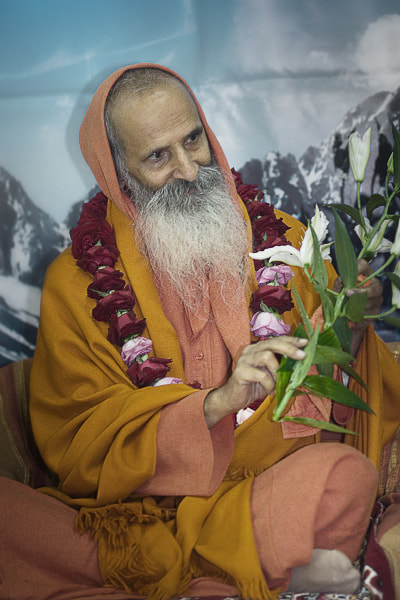 Swami Paramanandaji Maharaj Swami Paramanandaji Maharaj When I first met Swamiji, I had been engaged in a Yajnam (fire ceremony) which continued for many months. At that time, I had a fire altar made of brick set up and a space to sleep. I would wake each day and eat a little food and then began making offerings to the fire. When it got dark, I would eat a little more food and sleep. Perhaps once in a week, I would walk around. As I walked, I could see the karmas of the people who passed by. Sometimes I would also see the people's relatives and acquaintances, though they were not physically present. Some people had illnesses; others had problems with their career or relationships. I could see as I passed by, that these karmas were shifting. It was not from anything I was doing, but from the shakti (energy) of the Lord manifesting in the physical realm through the pranas (subtle nutrients) of the ghee, rice, flowers, and herbs which had been offering into the sacred fire. I typically did not will for any of this to happen, but simply observed. Sometimes, random strangers or people that I knew would approach me and tell me of their problems and I would pray for them. But most days I simply sat making offerings into the sacred fire. I did pray that the Lord help the world as He see best as I made offerings and I tried to simply serve as an instrument in His hands for that purpose. It would be revealed to me which mantras and offerings would be most useful at a given time. Sometimes I was aware of specific situations or energies that we were working to mitigate, but many other times there was no such knowledge and I would simply make the offerings I was guided to. At this time, I was not in the habit of conversing much with people, reading magazines, internet or new papers or watching television. I was very much out of touch with current events and culture. I did not hear about world events, popular music, fashions, celebrities, or politics. Yet one day, I saw a Swami appear beside the fire. He looked to me like I would imagine an ancient sage would look; long beard, beaming grin, thin figure, simple robes and wooden Padukas (sandals). He smiled and said "Come see me," and then he disappeared as suddenly as he had come. I had no idea who he was. I had never seen him before. I noticed he wore the Kavi robes of a Sannyasi (monk). I said "Wait! Swamiji, I don't know who you are. I don't know where you are. How do I 'come see' you?" Disturbed by this command which I had no idea how to fulfill, I concluded my offerings and walked away from the fire altar. With no idea what to do, I paced around anxiously and suddenly came across a magazine opened to a page with an ad for a teaching given by Swami Paramanandaji. The ad had his photo, and I recognized immediately that he was the same Swami from my vision by the fire. By some great luck or more likely on account of the karma of previous lives, Swamiji gave several teachings in nearby towns which I had the opportunity to attend. As I approached the event, I could feel Swamiji's shakti for nearly a kilometer. Coming into the physical presence of that Saint was like coming into an supercharged energy field which shook me to the core. Everything felt heavy around him. The gravity pulled down more in that space. I felt I understood why they call such a teacher a "guru" (guru means heavy in Sanskrit). I could feel my body tremble as it was flooded with Divine shakti and I felt the wall of maya tremble. The world shook around me and what was false began to fall away in the presence of the master. As he spoke in Hindi through a translator, I could not really understand his words or those of the translator. My awareness went inward and there was great difficulty to focus on the outer experience of words. As I sat in his divine presence, I felt many deep-seated pains in the body, of which I had been previously unaware. A tightness in the chest, fear in the back, sharp pains in the neck and head... These pains seemed so intense it was difficult to bear. The intensity was so great that at times I feared the physical body could not possibly sustain the experience and that it would surely perish. It was possible in this Saint's presence for me to tap into previously inaccessible sensations. Though his awareness helped guide and stabilize my efforts, it was a definite struggle for me to come to a place of stillness in relation to each of these intense experiences. They came one after another by the dozen, for days as I had the great fortune to be in the presence of this master. Each experience, seemed more intense than the last. But eventually, with great effort, I would come to a place of acceptance of the experience and it would pass. As these experiences passed, I felt as if imposing weights were lifting from my body and I saw brilliant colored lights dissipating from my aura. Later I witnessed Swamiji conduct a surprising feat involving fruit. It was during a subsequent meeting with Swamiji when he had come back to the town where I was living a different year. Swamiji was conducting a discourse after which the attendees were to be invited to come forward to receive Swamiji's blessings. At this point, I knew a few of his disciples who had made arrangements for the event. I heard them discussing the arrangements with concern. They had estimated that only a couple dozen people would attend the event, but as people continued to arrive, the actual number was closer to two hundred. Swamiji had requested that they buy a small amount of fresh fruit for him to give to the people attending the event as a blessing. They bought more than they thought they would need, but it was clear that there were many more people than fruits. They asked Swamiji if they should rush to a nearby store to buy more fruit, because it seemed clear there would not be enough for everyone there. Swamiji said "Don't worry about it." When Swamiji's discourse had come to an end, the devotees were anxious about the fruit situation and asked Swamiji if they should change the plan of telling people that he would be giving fruits as a blessing. He instructed them to put the fruits into a few baskets and not to worry. So they did as instructed. I was fortunate to be able to sit close and watch as Swamiji gave his blessings to all the people who had attended the event. Somehow, he gave a fruit to every one of nearly two hundred people from a couple baskets holding several dozen apples and oranges. Quite a few people received two or more fruits, presumably for people close to them who had not been able to attend the event. When the whole event concluded, I rose in respect as Swamiji walked away and watched with devotion until he had departed. After Swamiji had gone, I noticed that there were many fruits still in the baskets and scattered around the place where he had been sitting, many more than had originally been in the baskets of fruits brought by the devotees. Though most people who attended the event had no idea what had happened, I saw some of the devotees who had expressed concerns about the fruit before the event cleaning up afterward. We grinned at each other in acknowledgement. It was at another teaching Swamiji was giving around the time of this event that I had an amazing experience. I prostrated before the master and as I arose, he grinned radiantly and pointed above my head. Then I saw a bright golden light, which appeared like a large candle flame burning just above my head as if ignited by his gesture. It was warm and bright. The light was so bright in fact that its vision made it difficult to see other things. For about a week I struggled to see with the physical eyes as the inner eye remained focused on the flame growing and becoming brighter above my head. I could not walk around or drive because it was hard to see anything other than that light. I desisted from all scheduled activities, because it wasn't really possible to do much of anything else apart from focusing on this experience. Apart from the difficulty I was experiencing to see things, there were intense sensations as the light above the head seemed to be affecting me. It felt bright and pure and I felt quite differently. I felt that I must come into alignment with its radiance, and also that it was burning away certain attachments and fears. It seemed to have an affect of exposing what darkness was within. As this darkness would come to light, I would experience it acutely. Sometimes I would have to simply sit focusing on what had arisen with dedicated attention until it passed. Sometimes, the physical body would respond as if it was ill as toxins were purged from the body. It was an extremely intense experience, but not unbearable. Once I felt that I had become somewhat more comfortable with the presence of this light in my realm of experience, I saw it begin to expand. I saw what had appeared like a large candle flame burning above the head descend into my body as if it was bathing my aura. Though it seemed to dissolve into my body, it also remained above the head. Then I watched as the flame above the head began to extend to a greater area. First it seemed to project for several feet, but gradually this increased until it extended hundreds of meters. I noticed that the light seemed to have an affect on other people around also. It appeared to illuminate what darkness was present in them and to feed and sustain what light was there. For some time I felt somewhat self-conscious and concerned that people would be uncomfortable with this experience, but gradually I felt more at peace with it. Every person is affected in a subtle way by the energy of the people they come in contact with. This is simply the way of the world. I reasoned to myself, why should it be any different in this case? I saw that most people seemed to be repelled by this light but a few felt drawn to it. For many it seemed to cause outbursts as it purged what difficulties they were bound to. For others it facilitated healing and a sense of calm. Occasionally people would approach me and yell at me or physically attack me. To a casual onlooker, this would have seemed random and senseless. I, however, knew they were reacting to the light my Guru had shown to me. Other times people would approach and tell me they could see a brilliant light in my aura and ask for my blessings or advice. For several years, most people simply avoided me altogether and I remained in my apartment meditating for the most part not interacting with anyone. Those who planned to come to visit me would often suddenly become gravely ill or injured and cancel their plans. After some time I became able to somewhat withhold the energy of this light to make it much more comfortable for people to approach, but I have not learned any way to withhold it altogether. Now it is often still much the same, and many people seem to avoid me or to have great difficulty to approach. But a few have become more able to come close so that I can talk to them about the experiences I have had or offer my insight into their lives. Many others have come to help with our efforts to open a temple and teaching center. But the more they help, the more it opens them to this energy. People still often seem to become overwhelmed with emotion and start yelling or crying, or much more often, they simply flee suddenly. For those who feel the emotions as they begin to arise from within them, this process is much easier. For those who can simply observe as they pass, this seems like a great blessing. Many, however, seem to try to make sense of the feelings instead and become confused and begin to make irrational decisions as they act out the emotions which seem to have a grasp on them. Others seem to lack the ability to allow themselves to feel what is coming up for them and they then begin to experience difficulties in their lives which trigger the release of these feelings. Though most do not really seem to understand what is occurring, they often have a sense that their interaction with me has something to do with the experiences they are having. Some hate me for this, and others seem to love me for this. I don't take any of this personally and I do not expect any to remain for an extended period. It is simply their response to the flame that had been ignited in the presence of my Guru. I view this all as a blessing which keeps me focused on my spiritual practice. Even if I have hired a contractor for a job, I do not expect for them to finish that job. Suddenly people seem to become overwhelmed by this light and seek to distance themselves. I cannot fault them, I myself have often felt a desire to retract from the light which continues to attack all that is impure within me. But I do not have the choice to retract. Something has begun for me which it seems cannot be reversed. Perhaps when I have more completely integrated this light into my own experience, I will develop an even greater ability to withhold it so that others may come close without being so affected. I do not know. I do not care. I do not really have a choice in the matter. All I can really do is watch as things unfold. Though I do not see the light constantly like when it was first illuminated by the master's presence, I do feel it with me constantly and I am able to see it in my meditation. I am very much aware of its presence which forces me to focus inwardly. I am very grateful for this presence which focuses me. It is an inner companion to me which is not capable of disappointing in the way outer circumstances are. It is still and steady and ever-present, whereas the outer things are temporary and changing. On the last time I met with Swamiji, I got invited to sit and eat with him. Swamiji did not finish his food. I thought, we must take this food as prasad. I felt a great desire to take the food left behind by the master. His close devotee took the food before I could and as he took it I felt instantly satisfied. After eating Swamiji arose and we stood in respect. As he walked away I felt I would not meet with him again in the physical form in this janma. He got into a car and I expected them to drive Swamiji away immediately. But there was some delay and Swamiji sat in the car for quite some time, maybe 30 minutes or more. I had been silently practicing japa as japa is many times more powerful in the presence of a Saint. So I sat and watched Swamiji in the car and continued my japa. He closed his eyes and meditated with me. Then I saw a light brighter than 10 million Suns like the scriptures describe when they say Koti Surya. It was difficult to look at. To gaze at this light burned away the sense of self. I could not be and gaze at this light. But by Swamiji's grace I was able to look. I saw it first above the sahasrara and then it descended and filled my body and encircled my. Then my senses became still and awareness merged into the light. The light covered my being and I ceased to exist. I felt an overwhelming and intense sense of transcendent bliss. This was the second time I have experienced samadhi. I do not think that the experience lasted long, though there is no way to be certain as I had no sense of time. I came back to awareness of the body and saw Swamiji grin before they drove away. 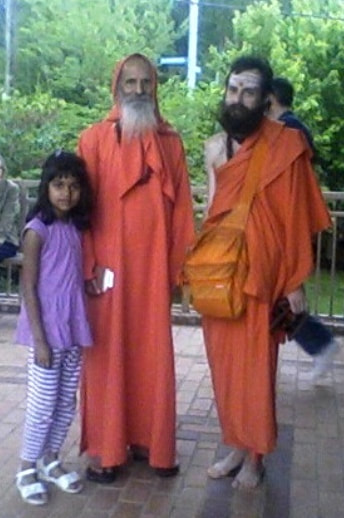 Swami Paramamandaji and Gananathamritananda at Durga Temple, Virginia around 2009. Swami Paramamandaji and Gananathamritananda at Durga Temple, Virginia around 2009. The next year Swamiji was scheduled to return to the US, but he had a heart attack and his doctors advised against travel. Some devotees then asked him, "Swamiji you seem to know the past and present and future, did you not know you would have a heart attack?" He said "Yes, I knew heart attack would occur." They looked at him in amazement and asked "Swamiji, we have known you for many year and have seen you heal thousands of people. Why did you not heal yourself?" Swamiji just laughed and asked "Why should I heal myself? Traveling to America to teach is fun. Heart attack is also fun. Why should I second guess the Lord whose will for all is perfect?" These are just a a few experiences with Swamiji I have been allowed to share. Perhaps in the future, I will be permitted to share even more. I have not seen Swamiji in many years, but he remains within me in the form of this inner light which he had revealed to me. He appears to me and guides me occasionally. I watch his videos lectures with joy and his ashram in Haridwara broadcasts the arti to Swamiji live occasionally. But I my physical contact with Swamiji is extremely limited and I doubt if I will see him again in this lifetime. Long after he has left from his physical body, I will feel that he lives on in me in the form of the light he allowed me to see within. For his ongoing presence in my life, I am extremely grateful. I am very happy that Yoga has become so popular in the West, but I am concerned about how the practice is changing and the effect that this has on Hindu people worldwide. These views are my own, and I do not claim to express a position that is representative of all the widely varied beliefs of Hindu people. However, I have worked extensively with Hindus throughout the world, for nearly 20 years, serving as a Hindu priest and a teacher of the traditional, spiritual practice of Yoga. I believe that many Hindus I know would share in a general agreement with many of the sentiments of this article, even if they do not agree precisely with each point. Yoga is and always has been a profoundly spiritual practice which has its origins in the Hindu faith. It is a sacred and revered practice to Hindus and an integral part of their faith and culture.
Many Hindu immigrants in the West have faced major discrimination and persecution on account of their faith. It is not possible in most US cities for openly practicing Hindus, who wear the traditional bindu, tilakams or other religious insignia, to easily find employment. There are many documented cases of Hindus being teased, mocked, or attacked for their cultural and religious differences from the Christian majority. In many locales in America, it is not possible for Hindu organizations to get permits for Temples or Cultural Centers, despite laws that prohibit Cities and Counties from discrimination based upon faith. As a result, many Hindus in the West have stopped the practices which in India kept them connected to their culture and their faith. Even if these practice have not been abandoned altogether, they have been quieted and concealed by most for the sake of a safe and successful life in which they can support their families. Yet some of the same practices, which earn Hindus scorn when practiced as a part of their religious customs, have been seen to increase the popularity and marketability of Hollywood stars and musicians. Westerners wearing a bindu on the forehead is one example, and practicing Yoga is another. For Westerners to lightheartedly adopt the same practices, which in their original spiritual context are prohibited by society at large for Hindus, adds insult to injury. It leaves Hindu immigrants with a bad experience of practicing their cultural and religious heritage while simultaneously devaluing it and transforming it into something much more vapid and mundane. Even in India, Hindus have faced similar oppression and persecution for centuries by Buddhist, Christian and Muslim invaders. The Christian Rajas outlawed many Hindu practices and they even translated the Hindu scriptures into modern Indian languages with the intent of exposing the inferiority of Hindus customs and promoting their own Christian dogma. The harm of such efforts can not be underestimated as the history and the traditional beliefs and practices of Hinduism are not well understood, even in India, because people are still influenced by the translations of the Christian missionaries. Violent and deceptive means to convert Hindus to other faiths have been used for centuries and continue in India today. I have heard stories of Christian missionaries in India tricking school children into conversion by rigging a school bus engine to fail when triggered. When the bus failed, the children were urged to pray to their Hindu Gods to fix the bus. After these prayers went unanswered, the children were urged to pray to Jesus. Then the driver triggered the engine to start and the children were impressed by the apparent superiority of Jesus and asked to convert. In other cases, Christian organizations have gone to underdeveloped areas lacking modern medical facilities. Using major resources from the West, they build state of the art hospitals and offer affordable health care. When the local medical providers have been driven out of business, these hospitals begin refusing care to all non-Christians and in cases have forced patients to get tattoos of crosses to prove their Christian faith before administering treatments. These acts are nothing short of an atrocity. If people can convince others to convert to their religion by the merits of the religion itself, this is acceptable, but these deceptive and forceful tactics are unconscionable. Yet these practices are allowed by Hindus and the Indian Government in a perhaps misguided effort to practice non-violence and tolerance. Ahimsa, or non-violence is extolled as supreme among virtues by Hinduism. This belief inspired a completely non-violent revolution as brave Hindus cast off the oppressive hand of British imperialism through non-violent protest. But it has also lead to Hindus accepting tyranny and oppression in certain cases. Hindus believe that all things are good, because the Lord dwells in all things. They strive to maintain peace and joy in adversity due to the faith that what befalls them is their karma which they must face. But Hindu people must make a conscious effort to stand strong for their faith and culture in positive and non-violent ways or the fate of the Sanatana (Hindu) Dharma, the oldest continuously practiced religion in the world, is uncertain. Western thought and modern science encourages Hindus to view their spiritual tradition as superstitious and silly, and many Hindus are losing faith. This is the modern climate for Hinduism throughout the world. Even if Western Yoga practitioners do not intend to cause harm or to diminish the beautiful spiritual customs of Hindus, when they extract what suits them from the Hindu spiritual tradition while leaving behind the spiritual essence, they are unknowingly reinforcing the efforts of the many Western missionaries, scholars, and rulers who have aimed to causes Hindus to disparage their own culture and religion. To put this situation in perspective for Westerners, one has only to imagine an analogous possibility involving the Christian faith. If Christians were persecuted and their religious practices prohibited by society, but then a practice like Christian Communion was taken out of context and marketed by non-Christians as an exercise routine, this would obviously not be acceptable. I can imagine instructors saying “Stand, sit, kneel. Join the palms together. And repeat.” This may sound ridiculous, but this is exactly what Westerners have done with the Hindu spiritual practice of Yoga. To me, Yoga is an integral and sacred part of my Hindu religion. I have capitalized the word “Yoga” in every usage throughout this article, in the same way a Christian would Capitalize the name “Christ.” Yoga is not a mere exercise to help people lose weight or to feel better about their bodies. Nor is it a trend to be marketed for profit. Yoga is a spiritual practice revealed by the Holy Sages of my Hindu religion, and it is a tried and tested technique for direct communion with the Divine. I am not at all opposed to Westerners practicing Yoga. The mystical science of Yoga was revealed by the Sages in India for the benefit of humanity. But people who practice Yoga should be aware of its origins, its purpose, and the depth of the practice. If a person uses the practices of Yoga to deepen their spiritual experience, this honors the tradition. But Yoga is not an exercise and the benefits of Yoga are much different than those of physical exercise. If a person is using the practices of Yoga for other purposes, they should not call it Yoga, in respect of the tradition that is held sacred by over a billion Hindus worldwide. Call it exercise. Call it aerobics. Call it Pilates. I would think this would not offend anyone. Most of the poses done in Yoga studios in the West were not even a part of traditional Yoga practice until the 20th century, and most of the poses and practices talked about in the Yoga scriptures are never practiced in Yoga studios. However, if practitioners of this modern exercise, which has drawn influences from traditional Yoga, want to continue using the borrowed Sanskrit name “Yoga,” they should delve deeper into the mystical and spiritual science of Yoga in the traditional ways. The world would be a better place for their sincere efforts. 1) Stripping Spirituality from the Practice of Yoga Since the mystical, spiritual teachings of Yoga were first brought to the West in 1893 by His Holiness Swami Vivekananda, Yoga has become increasingly popular. Today, 36 million Americans practice Yoga. But as the popularity of Yoga has increased in the West, the practice has changed. Swami Vivekananda wrote several books in English on Yoga, but he, himself did not teach or practice Asanas (postures) beyond a few simple sitting poses for meditation. In modern Western Yoga classes, the poses are everything and meditation is an afterthought, if it is not omitted entirely. Yet meditation and its benefits are the goal of every other practice of Yoga. In many Western Yoga classes, spirituality is intentionally omitted in order to not offend or to entice a broader range of students to attend classes. Yoga teacher training programs do not go deeply into the spiritual aspects of the practice, and many Western Yoga teachers know very little about the origins and history of the practices, or their intended purpose. This has led to a very different idea of what Yoga is in the West. Everyone has heard of Yoga, but few understand its mystical purpose or that it is inextricably connected to the Hindu tradition from which it arose. I have even given teachings at Yoga studios that have later asked me “Can you speak less about Hinduism? We don’t agree with the Hindu beliefs or practices. Can’t you just leave out the spirituality? ...or if it must be included, could you teach about Yoga from the perspective of a nicer religion like Christianity or Buddhism?” Many Westerners want to strip spirituality from their Yoga practice. This is understandable, because it is hard work that requires a lot of faith and courage to face the inner karmas and mental patterns. But it is simply not possible to strip spirituality from Yoga practice, and for that practice to remain Yoga. The meaning of Yoga in Sanskrit is “Union,” and the goal of Yoga is to realize the Divine within, or to merge one’s awareness into the Divine source. Without this goal and experience, it is not right to call it Yoga. 2. Claiming Yoga is Not a Spiritual Practice This one is perhaps the fault of many Eastern Yoga teachers who have claimed that the mystical practice of Yoga transcends any particular Religious tradition. In the East, Yoga is practiced by Hindus, Jains, and Buddhists, and the mystical practices and beliefs of Yoga are indeed similar to those of other mystical traditions (like the Gnostic Christians, Sufi Muslims, or Kabbalist Jews) . But these traditions all teach the practice of non-violence, and a belief in dharma (spiritual duty), karma (the importance of right action) and reincarnation as a basis for the practice. Many Westerners, have misunderstood the statements of Eastern Yoga teachers and taken them to mean that Yoga is a secular practice which is not spiritual or religious. The traditional scriptures on Yoga are deeply spiritual and inextricably based in Hinduism. The Yoga Sutras of Patanjali are often cited as a source for claims that Yoga is not a religious practice, but the text is widely misunderstood. Patanjali was a Shaiva Hindu, and he was sent by his Guru, Nandinathar, to South India to convert the people to Shaivism. He consecrated temples to Shiva in Tamil Nadu and his place of Samadhi (burial) is at a Shiva Temple.From the large number of Shaiva Hindus in this area today, it would seem that Patanjali’s mission had been quite successful. The Yoga Sutras clearly state that before a person begins the practice of Yoga, they must practice certain restraints and observances, including Ishwara Pranidhana. Pranidhana means puja (a Hindu worship ceremony) and Ishwara means Lord Shiva. It is not coincidental that Patanjali chose a name of Lord Shiva and not a non-sectarian name for the Lord, like Brahman. The Yoga Sutras were written to as a guidebook for those wanting to practice Pantajali's Shaiva Hindu religion. Though the practice of Yoga may not involve spirituality for many Westerners, it is not right to claim that Yoga is not a spiritual practice. For the Hindu people who religious tradition gifted the practices of Yoga to the world, Yoga is a revered practice and a fundamental sacrament of their religion. 3. Focusing Practice Mainly on the Physical Postures Yoga is a tradition which teaches of eight successive practices: 1. Yama - Restraints 2. Niyama - Observances 3. Asana - Sitting Comfortably 4. Pranayama - Calming the Breath and Mind 5. Pratyahara - Withdrawing the Senses from External Stimuli 6. Dharana - Concentrating the Mind 7. Dhyana - Meditation and 8. Samadhi - Union with the Lord. Most Yoga classes in America consist almost entirely of the physical postures originally designed to enable a Yogi to sit comfortably for hours of meditation. The Yoga poses were not designed as an exercise routine, and they are not well suited to be used as such. If a person searches the word Yoga in a Google image search, they will mainly find photos of white women doing Yoga poses. What is worse is how most of the major Yoga organizations in the US describe the benefits of Yoga. The Yoga Alliance, which is the largest trade organization for Yoga professionals in America, lists the following benefits of Yoga on their website: Stress relief, pain relief, better breathing, flexibility, improved strength, weight management, improved circulation, presence, and inner peace. All of these benefits could be claimed of most any aerobic exercise, but the true benefits of Yoga are not listed at all. The physical postures are only one very small component of a much larger system of practices. Ultimately, the practice of Yoga is aimed at Moksha (liberation from the confines of the body, mind, matter, karma, and reincarnation) and Samadhi (experiencing union with the Divine). This is the highest purpose of Yoga practice, to which any other attainments are secondary. Yet the traditional Yoga scriptures list a broad range of mystical and spiritual experiences and powers that can arise from Yoga practice including: levitation, being in two places at one time, the ability to make oneself invisible, making oneself very small or very large, healing diseases at will, knowing the past and the future, knowing the thoughts and actions of others, seeing distant or hidden objects or people, the ability to see and communicate with deceased souls and spiritual beings, being able to move or manipulate matter at will, being able to leave the physical body and enter into the body of others, and being able to transform base metals to gold. These and many more are described as siddhis (mystical powers) that commonly arise from the practice of Yoga, yet none of these are listed by the big Western Yoga organizations. Though Hindus can be proud that Western culture has embraced their tradition of Yoga, it is disheartening to see that Westerners in general have refused to acknowledge the traditional spiritual benefits of the practice, and that the practice has been relegated in the West to the place of a secular exercise routine. 4. Practicing Yoga without Yama and Niyama Traditional sources on Yoga emphasize the importance of practicing certain restraints (Yama) and observances (Niyama) before any of the other practices of Yoga are attempted. The requisite practices of Yama and Niyama are considered critical before the practice of Yoga can begin. These practices are addressed in depth in the traditional Yoga scriptures, but little attention is given to the practice of Asana (postures). For example, the Yoga Sutras of Patanjali has 16 verses elaborating upon the fundamental practices of Yama and Niyama, but only one line describing Asana. All that Patanjali says about Asana is, “Sit still in a comfortable position.” It is clear from these texts that Asana practice had very little importance in traditional Yoga. But Western practitioners of Yoga seem to usually omit the important practices of Yama and Niyama and skip to subsequent practice of Asana. The practice of Yama and Niyama is essential to prepare a seeker for the experience which the later practices of Yoga induce. As the process of Yoga begins to reveal the vasanas (karmic imprints) of the mind, it is quite likely that the intensity of thoughts and feelings which begin to purge from the subconscious mind would become overwhelming unless a seeker has been prepared by the dedicated practice of Yama and Niyama. They build the character and experiential knowledge of the process of consciousness going within, which is necessary for a person to have success in the practice of Yoga. The renowned Yoga teacher B.K.S. Iyengar said “The practice of Asana without the backing of Yama and Niyama is mere acrobatics.” I would go beyond this to say that a person whose practice of Yama and Niyama is advanced is a great Yogi, whether or not they observe any of the other practices of Yoga. A person who claims to be practicing Yoga should sincerely evaluate themselves as to whether or not they are observing these most basic Yoga practices, and they should strive each day to implement them more and more into their lives. The 10 Yamas and Niyamas listed by the traditional texts on Yoga are (Patanjali’s list has only 5 of each): Yamas (Restraints) 1. Ahimsa - Non-violence in thought, word, and deed. This principle restraint of Yoga is the reason that Yogis traditionally observe a strict vegetarian diet. 2. Satya - Truthfulness 3. Asteya - Not stealing or taking credit for the works of others 4. Brahmacharya - Celibacy for the unwed and marital fidelity for the married 5. Aparigraha - Non-possessiveness / Renunciation of property 6. Kshama - Forgiveness 7. Dhriti - Fortitude and Steadfastness 8. Dhaya - Compassion 9. Arjava - Sincerity and Straightforwardness 10. Mitahara - Moderate appetite Niyamas (Observances) 1. Tapas - Practicing austerities like fasting, wearing robes (or plain, unfashionable clothes), sleeping on a hard floor, remaining awake for extended periods, practicing silence, etc. 2. Santosha - Contentment 3. Astikya - Maintaining faith in God, Guru and Scriptures 4. Dana - Charity, Donation 5. Ishvarapujana - Worship of Lord Shiva through the 16 traditional daily offerings 6. Siddhanta Shravana - Listening to recitation of sacred Hymns 7. Hri - Remorse 8. Mati - Mindfulness 9. Japa - Repetition of Mantras 10. Vrata - Observing Holy days, pilgrimages and sacred vows. 5. Practicing Yoga without a Guru Traditionally, no serious student of Yoga would ever attempt practice without the instruction and initiation of a Guru. Practicing Yoga without a Guru is ineffective at best and dangerous at worst. Traditional wisdom warns that without guidance and the energetic support of a living Guru, the practices of Raja Yoga designed to awaken Kundalini will lead a person to the asylum, hospital, or cemetary. The point is emphasized by all the traditional scriptures on Yoga. Yogic philosophy teaches that it is the nature of the ahamkara (ego) to be bound and to bind itself further by its very nature, but that it is the nature of a realized Guru to free the soul from maya (delusion) and karma (actions done out of this delusion). By Guru, what is meant is a realized master, who is uniquely qualified to lead souls to liberation by his (or her) own practice which has lead to a direct experience of the Divine. This does not mean a Yoga teacher who has had 200 hours of training, but someone who has humbled themselves before their own master and dedicated their life to the practice of Yoga through years of effort. Patanjali says in verse 1.26 of the Yoga sutras that before a person begins the practice of Yoga, they must find a Guru who has realized God. He goes on to suggest that a person who has not yet found their Guru can attract the Guru to them by practicing the mantra, “om.” Though all the texts on Yoga emphasize the necessity of a living Guru, certain modern schools of Yoga claim that realization is possible without a Guru. These schools of thought are founded on egoism and they expose a fundamental misunderstanding about the nature of the soul and maya. The Lord reveals himself to sincere seekers through the efforts of the enlightened masters, yet for those who are too egotistical to bow at the feet of a master, realization waits until the soul can mature through the self-centered delusion that the ego can free itself from suffering. It is not always easy to work with a master, because the presence of the master will bring up unresolved karmas and emotions for the seeker to process. But without the blessing of a master, the process of Yoga cannot really begin. It is hard to understand the grace of a master for those who have not experienced it. Hidden doors are opened in the presence of the Guru and things that were not possible despite the best efforts of the seeker become effortless. Should any serious student of Yoga seek a master? Yes. Absolutely. Anyone who is sincere in their practice must admit that grace comes from beyond the veil of maya and the binding force of the ego. There are numerous traditional Gurus teaching various forms of Yoga, and many are traveling the world each year. It is not necessary to go to India to find one’s master. It is only necessary to prepare oneself and to attune oneself to the energy of their master. If a person has not yet found their Guru, they can prepare themselves by practicing the Yamas and Niyamas and follow the traditional suggestion of Patanjali. They can chant “om” and pray to Lord Ganesh, who is said to be embodied by the mantra om to prepare them for their Guru. When a person attempts the practice of Yoga without the guidance of a Guru, they are not only devaluing themselves and their own practice, but also the system of Yoga. When seeking to learn a skill like playing piano, people generally seek an accomplished teacher. But it is relatively easy to learn to play a piano concerto. Most good students could do so within a few years of practice. Realizing the Divine Self is quite difficult, and requires many years of disciplined effort. It is the highest accomplishment possible for embodied souls and the ultimate purpose of human incarnation. People should not take the practice lightly nor should they belittle it by acting as if they do not require the assistance of a qualified teacher.  Yogis traditional kept few personal possessions, but all or most of these would be considered essential. Can you identify them? Do you know the purpose and significance of each? Do you use any in your practice? These are 1) gurupaadukaas, 2) kamandalu, 3) yogadanda, 4) aasana, 5) rudraakshamaalaa, 6) vibhuuti, 7) tulasiidalam, 8) kaupiinam, and 9) bhikshaabhaandam.  1) Guru Padukas (Holy Sandals of the Master) According to all the traditional texts on Yoga, before a person can begin a practice of Yoga, they must receive the blessings of a realized Guru. It is the nature of the ahamkara (ego) to bind itself and to remain bound, and the nature of the realized master to stimulate awakening in the disciple. Wooden padukas are the traditional footwear of Yogis. The wood protects the feet not only from physical objects which would injure the feet, but also from all sorts of impurities and negative energies on the ground. This style of foot wear is anything but comfortable, and it requires the utmost mindfulness to constantly clutch with the toes. Having worn only wooden padukas for several years. I can attest that it is an awkward exercise in mindfulness to wear them, with injury the result for a momentary lapse of attention (especially on stairs). I was amazed to see one of my masters who is well into his 70's walking in padukas in an extremely graceful way as if he was floating. Guru padukas are the holy sandals of the Guru. They are a symbol of the master. Whenever the student sees the teacher, they rush forward to receive blessings by bowing and touching the holy feet of the teacher. Yoga understands that much energy leaves the body through the feet and that powerful energy to stimulate our process of awakening imbues the seeker who makes themselves humble before a master. When encountering the footwear of the master, the disciple will bow and seek blessings, because even the chappals are blessed by the contact with the master's holy feet. When the disciple can not be in the physical presence of the master, a small pair of padukas is kept for worship. This helps maintain mindfulness on the blessing of the Guru's grace, without which no progress wold be possible on the path of Yoga. This is why we are listing gurupadukas as the foremost prop for any yogi.  2) Kamandalu (Water Pot) Kamandalu is a water pot, often with a handle at the top and a spout. Traditionally used by Yogis for carrying water for drinking and for offering in prayers. Many Yogis pour morning tarpana oblations to the Sun from the sacred kamandalu. Water is a must in every puja ceremony, and most rituals for purification, like punyahavachanam, rely heavily on the use of pure water. The kamandalu has become not only the symbol of a the simple, austere, self-sufficient life of a Yogi, but also a symbol of spiritual purity which comes to the Yogis who maintain an austere existence, remaining aloof from society, abstaining from material pleasures and comforts, and remaining absorbed in their quest for realization. The kamandalu has become a symbol of the Yogi's absorption in their quest for God, and of ascetic aspects of God like Shiva. The kamandalu is also a symbol of the lifegiving powers of water and of amrita (the nectar of immortality). As such, it is associated with deities who relate to water like Varuna and Saraswati.  3) Yoga Danda / Japa Danda (Stick for Mantra Japam) A Yoga Danda is a stick, usually made from wood, constructed with a support at one end, designed for use in mantra japa. The Yoga danda enables long hours of mantra repetition, counting the mantras recited with a japamala, so that the mala can be held without touching impurities on the ground. Items used in the practice of Yoga are regarded as sacred and are always treated with the utmost respect. This includes not touching them mindlessly, not moving them around hastily or carelessly, not touching them with the feet or touching them to impure objects like dirt or waste, not allowing them to touch the ground, and not allowing them to be seen casually by people who lack reverence and respect for their sacred nature. Yogis often use the Yoga danda in conjunction with a cloth to cover the japamala from drishti (a gaze from onlookers which transfers negative energy). Japa is possibly the most important of the higher practices of Yoga. It is different than affirmation, as it uses sacred Sanskrit sounds to open inner channels and to carry consciousness transcendent states of awareness. It is different also from kirtan or bhajana, where mantras are sung in musical ways, which is more of a practice of bhakti Yoga. The practices of bhakti Yoga help to instill a love of the Divine which helps later to give the aspirant the faith and courage to persist in the higher practices of Yoga. Japa is repetitive and very dull. It is a meditation. 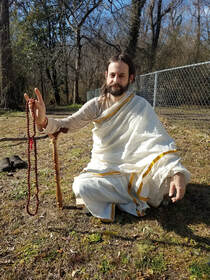 The straightness of the Yoga danda is a symbol of the stillness and steadiness of focus required for japa to bestow its effects. It is a support to the Yogi in their countless hours of practice. Through such practice, the Yoga danda is endowed with mystical powers as it vibrates potently with the power of the mantra. Contact with or sight of such a sacred object is capable of healing diseases, answering questions, and inducing higher states of consciousness. The Yoga Danda is different from the Brahma danda carried by brahmacharis (those who have taken vows of celibacy) including sannyasins. This staff is more of a walking stick designed to support such wandering ascetics in their travel from place to place. It is a symbol of the central channel of awakening within the spine, the sushumna nadi, and a symbol of their independence and self-sufficiency.  4) Asana (Seat / Meditation Mat) The asana is considered an indispensable prop for traditional Yoga practice. People wrongly think that asana means various postures, but asana means to sit, or in this case a seat for sitting on for meditation and mantrajapa. The Yoga sutras of Patanjali say only "Sit in a comfortable posture" in reference to asana and does not mention a single pose. Most of the other older texts on Yoga list only a small handful of poses, which are mainly sitting poses for meditation. It was not until the 20th century when modern Indians, who were not Yogis, began to add stretching poses of modern aerobics to the practice of Yoga in an effort to make the esoteric practice of the mystics more widely applicable to the general public. The importance of an asana, or a seat for practice is based in mystical knowledge of transfer of energy. Asanas made of certain, pure substances help to prevent the loss of spiritual energy through the legs and feet as they come in contact with the ground, and they help to create a protective barrier from negative energies which would otherwise be transferred from the ground and hinder the Yogi's meditation. Suitable substances for construction of an asana are said to be wood, cotton, wool, silk, darbha grass, or animals skins. Animal skins should be tanned from animals that have died of natural, peaceful causes, and the best are said to be from a tiger, lion, deer, or antelope. It is possible for an asana to be made of various layers of all these substances. Obviously, wool, silk, cotton, or animal hide is the easiest to travel with for wandering Yogis and therefor the most common. Wooden and dharbha asanas are more common in Temples and homes for puja ceremonies. There are various yantras drawn on asanas along with specific mantras for purification which are used to purify and empower the asana for use. As an asana is used repeatedly for sadhana, spiritual energy builds and it helps to empower one's practice. Its use may seem excessive to novice practitioners of Yoga, but for the mystical Yogi attuned to the subtle energies around and aware of their effects on consciousness the asana is an invaluable tool to help empower the practice of Yoga.  5) Rudraksha Mala (Strands of Sacred Rudraksha Seeds) Rudraksha mala is worn by nearly all Yogis. Rudrakshas are the sacred seeds of the bright blue fruit of the Rudraksha tree, Elaeocarpus ganitrus, native to the foothills of the Himalayas in India and Nepal. They are very sacred to Hindus and many Buddhists for their sacred nature and effect on consciousness. Contact with rudrakshas is said to calm the mind, increase spiritual awareness, and lower blood pressure. The beads are used to make japamalas for mantra practice and kanthamalas for wearing. Wearing rudrakshas is said to have a protective energy and helps keep a person current facing their karmas. Rudrakshas open a channel to inner realms to deepen meditation and help a person to connect with the devas. Yogis wear rudrakshas at all times to aid in their practice and to help avert negative energies and keep them connected with the devas. It is said that a person who wears rudrakshas at the time of death will be benefitted to have their astral body projected to the higher astral realms and not suffer from being caught in the hellish lower astral realms after death. Rudrakshas have lines along them called mukhis or faces. Five mukhis is most common. Each mukhi rudraksha 1-12 is said by the scriptures to have specific energies and abilities relating to various Planets in Vedic astrology and capable of helping with specific problems. Some like the one mukhi rudraksha are very rare and sell for a great deal of money. Because of this, it is common to encounter fake rudrakshas. For general use, the 5 mukhi rudrkasha is best. The Rudrakshajabala Upanishat says: "Wearing rudraksha removes the sins committed in day and night. Seeing it produces 100 thousand benefits, and touching it produces 10 million. Wearing it produces a billion benefits, and wearing and counting mantras on the beads produces 100 billion benefits."  6) Vibhuti / Bhasma (Holy Ash) Vibhuti or Bhasma is the sacred white ash which is very dear to yogis and sadhus. The ash, 'bhasma' is made in a proscribed method, building a fire using dried cow dung and darbha grass. Offerings are made into the fire of ghee and sesame seeds to empower the sacred ash with specific mantras. Pure white ash is then collected and powdered finely and sometimes scented for use. The sacred ash empowered in this way is known as vibhuti, or 'powerful.' Vibhuti is applied as a part of the traditional tilakam, or sectarian markings on the forehead, arms and chest of Shaivas, Shaktas and Smartas along with specific mantras, and the othodox never leave home without wearing it. If vibhuti prepared in this way is unavailable, the shastras allow the use of any ash from a sacred fire where offerings are made regularly. The vamamarga shastras also allow the use of ash from cremation grounds, and many naga and aghori sadhus use this. Vibhuti is most commonly applied in three vertical lines called, tirpundra. According to Shaiva philosophy, these lines represent the burning away of the three pashas, or 'bonds of the embodied soul.' These are anava, 'the false sense of being limitted;' karma, 'action arising from this delusion;' and maya, 'the phenomenal world which arises due to action.' Vibhuti has mystical powers to open a channel to the inner realms. It casts an emanation of astral light around the wearer through which the Devas can see into the physical realm. Vibhuti has a purifying effect upon consciousness, keeping a person current with their karmas, and it has a protective effect. Wearing vibhuti protects from all sorts of negative energies from people and places one goes and actually can help to protect from physical dangers as well. When performing the pancha agni sadhana, the austerity of sitting in fire, Yogis first place vibhuti on the body to protect from physical burning. When Yogis pierce the tonque and skin with metal spikes as a part of traditional kavadi offerings to Lord Murugan, they place vibhuti on the skin before inserting the metal spike to reduce bleeding, infection, and other forms of lasting damage to the body. Vibhuti has such a strong purifying effect that if water is not available, "agneya snanam" is considered permissible, which is to bath using holy ash. It is a very powerful practice of purification, in fact many times more powerful than a regular water bath to apply vibhuti all over the body head or toe. Vibhuti is always offered to Lord Shiva, and is commonly offered as prasad (a blessed sacrament) at Shiva temples. Small amounts are eaten for healing from serious diseases. The Skanda Purana says that if a person performs any act of worship of the Lord while wearing bhasma, it will have great effects to purify that person and uplift them toward spirituality, even if they lack faith and merely do the outer actions of worship. This is the sacred power of vibhuti.  7) Tulasi Dalam (Holy Basil Leaf) Tulasidalam - Tulsi or Holy Basil leaf is very sacred to the Vaishnavas who worship the plant as a Goddess incarnate. Unlike most other substances on earth which are said to require prana pratishtha rituals to open channels to the inner realms before they are considered fit for worship, Tulasi is said to occur naturally with those channels fully open. Offered in every Vaishnava puja, tulasi is considered an essential substance for prayer. Malas are made for wearing and japa out of beads carved from the sacred wood. The tulasi plant is also a veritable medicine chest. The fragrant leaves are capable of helping to cure any dis-ease condition a Yogi may experience. They even have the capacity to bring the dead back to life, which is why they are a compulsory offering in every Hindu funeral ceremony. Tulasi leaves are offered to ensure it is the Lord's will for the soul to depart before funeral pyres are ignited. Having sacred tulasi leaves nearby means for wandering yogis that the cure to any potential dis-ease condition is nearby. Living a self imposed transitory life of poverty and austerity means that medicines are not always available to a yogi. The great Yogis have revealed simple practices for self-healing for such wandering ascetics. Consuming tulasi daily not only uplifts a person's awareness and calms the mind for meditation, but it also boosts ojas (immunity) to help prevent dis-ease. Like rudrakshas, tulasi has the capacity to attract divine beings and to keep a person current processing their karmas. With the proper knowledge, tulasi can be used to treat any health concern, but few know of the mystical healing uses of tulasi to treat various diseases. The yogis have passed this information down through the generations. This is very similar to the more well known practice of shivambu, involving drinking one's own urine for health and using urine to treat various diseases. These practices are especially important for yogis since they are often exposed to harsh environmental conditions living outside and often go without food and water for long periods of time. Such yogis sometimes eat several peppercorns each day when food is not available to encourage the body to recycle the nutrients of the food they have digested already. The wandering yogi may not always be able to take proper care of the body, or to afford needed medications, but it is always possible to carry a little tulasi or to produce a little urine. Tulasi is a great aid in practice and a literal lifesaver for the yogis subjected to harsh conditions in order to press forward in their sadhana. Tulasi Gayatri Mantram Tulasi-devyai ca vidmahe viShNu-priyaayai ca dheemahi tanno vrindaah pracodayaat "May we know that Goddess Tulasi and meditate on the beloved of Lord Vishnu May that Tulasi, with a cluster of flowers, bestowing virtue and strength, impel us."  8) Kaupina (Loincloth) The simple Kaupina is the basic traditional garment of Yogis, Ascetics, and Brahmacharis. Before the modern fashion trends of commercialized Yoga, this simple loincloth was a symbol of humbleness, austerity, and renunciation for Yogis. This is vastly different from modern stylish Yoga garb which are designed to bring attention to the physical body, objectify women, and put money in the pockets of an ever-growing 80 billion dollar global industry taking advantage of the materialistic nature of humanity by commodifying the once spiritual practice of Yoga. Unlike the many expensive Yoga fashions peddled by the Yoga companies, the kaupina is the humblest of garments, worn in India by the impoverished out of necessity and by Yogis and renunciates as spiritual austerity. A kaupina can be easily made at home from plain cloth. It is a loincloth constructed of a string or piece of cloth which is tied around the waist. To this a piece of cloth is attached which is secured firmly between the legs by pulling it through the string itself (see illustration below). Though some ascetic Yogis have worn nothing more than the kaupina as act of extreme austerity, it is today most commonly worn under the tradition veshti or other clothing by Yogis and brahmacharis. The design of the kaupina itself is a great aid in the practice of brahmacharya (celibacy). The kaupina places gentle pressure around the genitals, stimulating marma points which help to subjugate the sexual urge and activate the higher chakras. For men in particular, the kaupina is a great aid in the practice of brahmacharya because it makes it very painful if arousal occurs. Though it is more common for men to wear kaupina, it is useful and acceptable for women to wear it also. Women have traditionally worn kaupina during their monthly cycle and its design is supportive to the practice of bramacharya for women also. It can be worn under saree or other garments. Blessed with mantras when wearing, the kaupina is not only a symbol of renunciation of materialism which is a great obstacle in the path of Yoga, but a support and constant reminder of the inner quest of the Yogi. 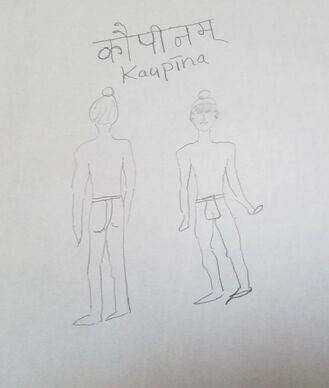 This garment is the fundamental article of clothing of the Yoga practitioner and a potent symbol of their renunciation. The scriptures extol the greatness of the lowly kaupina and many deities like Shiva, Hanuman and Palani Murugan have been depicted wearing it. Modern Sages like Ramana Maharishi and Nityananda of Ganeshpuri are most often seen wearing only kaupina. Adi Shankaracharya's "Kaupina Panchakam" says: "Always contented in the joy of ones own self Who is peaceful by curbing the desires of his senses Who is immersed day and night in the bliss of Brahman The man with just the loincloth is indeed the lucky one."  9) Bhikshaa Bhaandam (Begging Bowl) Picture The Bhikshaa bhaandha or begging bowl is the universal symbol of Yogis and Sadhus in India. Made from wood, earthenware, or metal, the begging bowl is a necessity for the practice of Yoga. Followers of the lefthanded path like the Nagas and Aghoris often use human skulls as begging bowls to remind them of the impermanence of life. There are few things more humbling than having to beg for ones livelihood. Many times alms are refused and the beggar insulted. Traditionally, Yogis and Sadhus do not remain in one place, but roam from town to town, never remaining in one location for longer than three days at a time to avoid developing attachments. Traditionally, they are permitted by tradition to knock on three doors with their begging bowl each day asking for food. If food is denied three times, they fast that day. This practice, is one which is practical in the East where Yogis are revered as Holy people, and it is understood that their intense dedication and sadhana has a stabilizing effect on society and human consciousness. People rush forward to give bhiksha or alms to Yogis, because they know that it opens a channel for them and their families to have their karmas and troubles healed by the punyam (the merit) accrued from the many austerities practiced by the Yogi. Householders in the East understand that it is their spiritual duty to give food, and clothing, and money to support the mission of dedicated spiritual seekers. Traditionally, the Yogi does not just receive bhiksha, but must give karmakanda in return. Karmakanda in this context means the blessing given by a Holy person to those benefactors who sponsor the efforts of the holy person by giving alms. Though people may not have the karma to experience healing or realization on account of their own merits, the act of giving bhiksha opens an energetic channel to the holy person enabling that mystic access to the subtle bodies where a persons karmas are held and carried from life to life. In the highest sense, the Yogi's duty upon receiving bhiksha is to aid in working out the karmas which bind and hinder those who have given alms. In certain cases, there will be no outer action to symbolize this inner work which the Yogi is duty bound to complete. In other cases, the Yogi will demonstrate outwardly the karmakanda by either providing spiritual teachings, pooja services or other spiritual services. Free from attachments, the earlier Yogis wandered place to place with little more than the sacred bhiksha bhanda as an implement signifying faith in the Lord's undying support. Their hearts and minds are open like the empty bowl to whatever the Lord brings into their path, and like the empty bowl which can be filled with food by generous yajamanas, their being is like a blank slate for the grace of God to flow through. Few in the West understand the seriousness of the practice of the Yogis in the East nor do they see it as their duty to support the efforts of such spiritual seekers. People often lack compassion and generosity. Many are the stories of God coming to a person's home in the form of a beggar to test people's spirit of generosity. It is true that those who give, earn the karma to receive; and that those who deny any person in need, will themselves be denied in the future when they find themselves most in need. We must give to receive, which is a secret that is understood well in the East. For people in the West, the focus is on materialism and material comforts are abundant, but the bhiksha bhanda is empty and our hearts and minds are lacking spiritual bliss and tranquility. In order to bring back this ancient and beneficial tradition of bhiksha / karmakanda, we must start by giving generously to all in need. The enlightened masters are taking birth in the East, because there the system supports their existence and there the people are open to their spiritual assistance. To attract such souls back to the West, we must learn to look at all beggars as God himself asking for us to sacrifice a little and give of the abundance we enjoy. We must begin again to see it as our duty to donate generously to all spiritual institutions and seekers. |
Soma Matha BlogSharing news, articles, teachings, and events. Archives
September 2023
Categories |

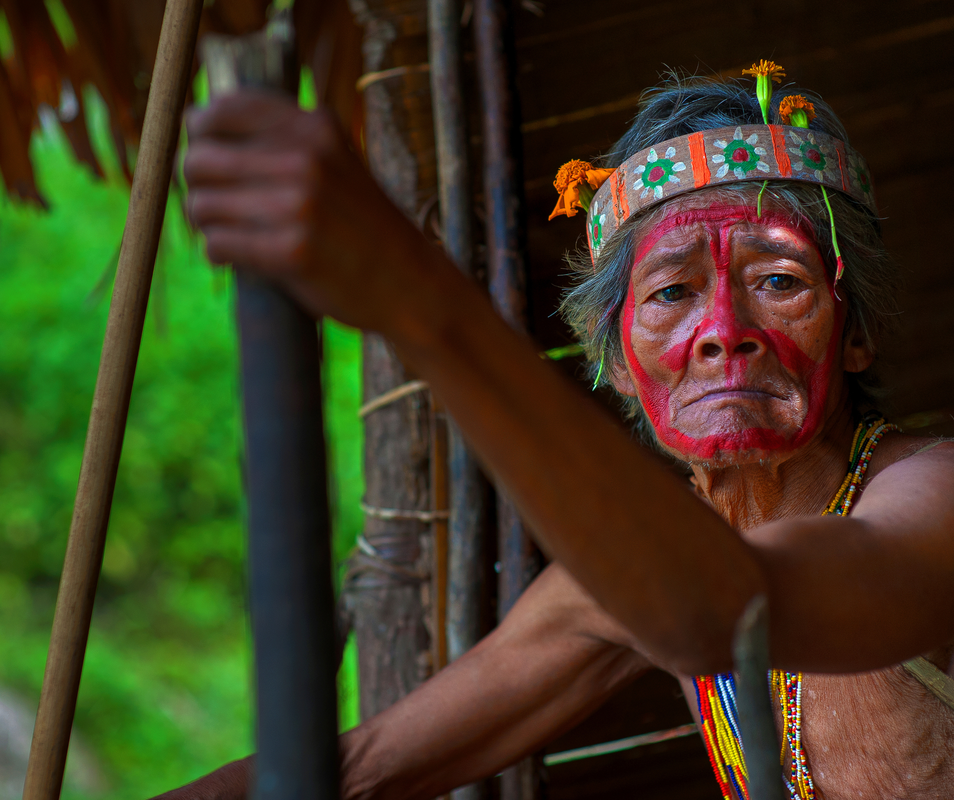

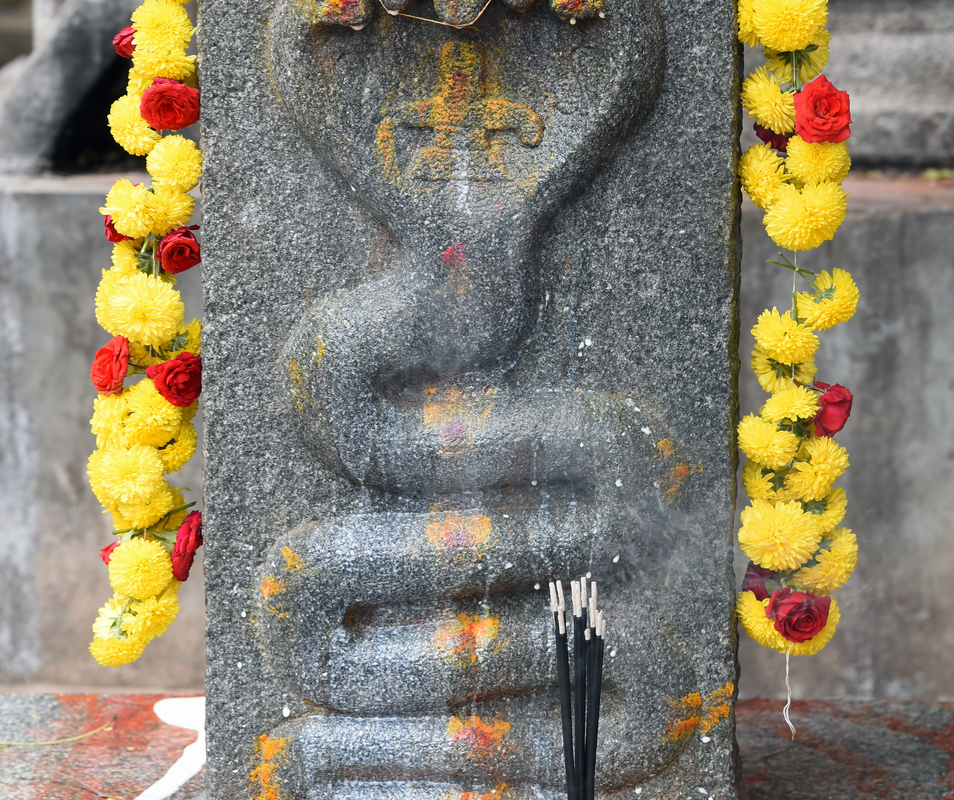
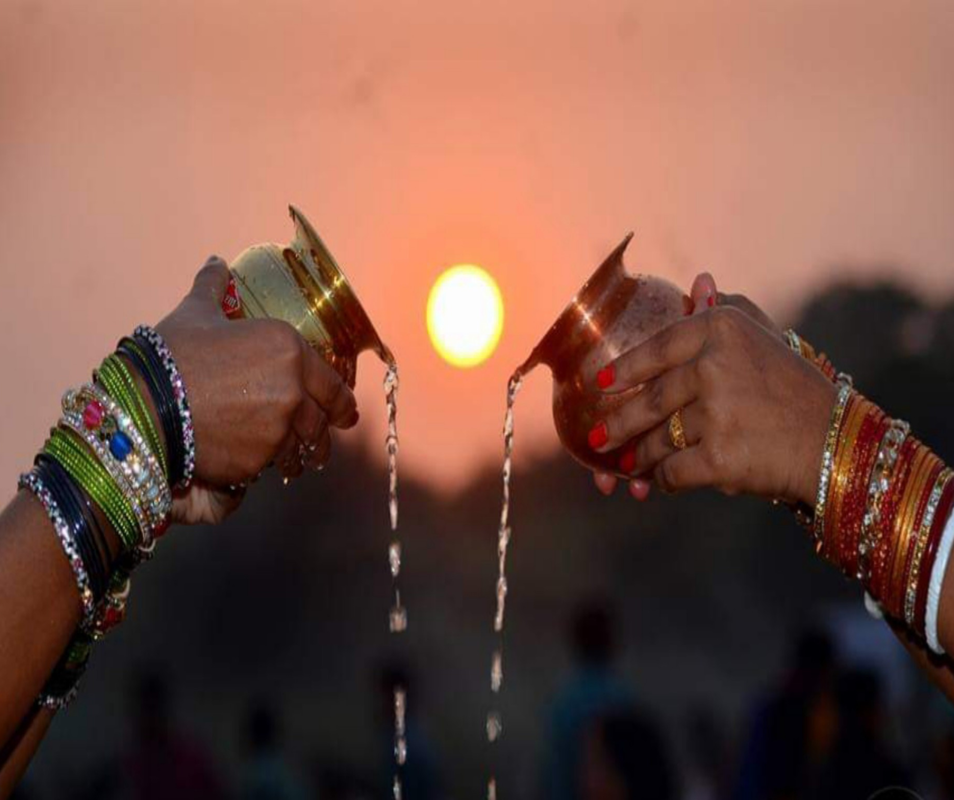
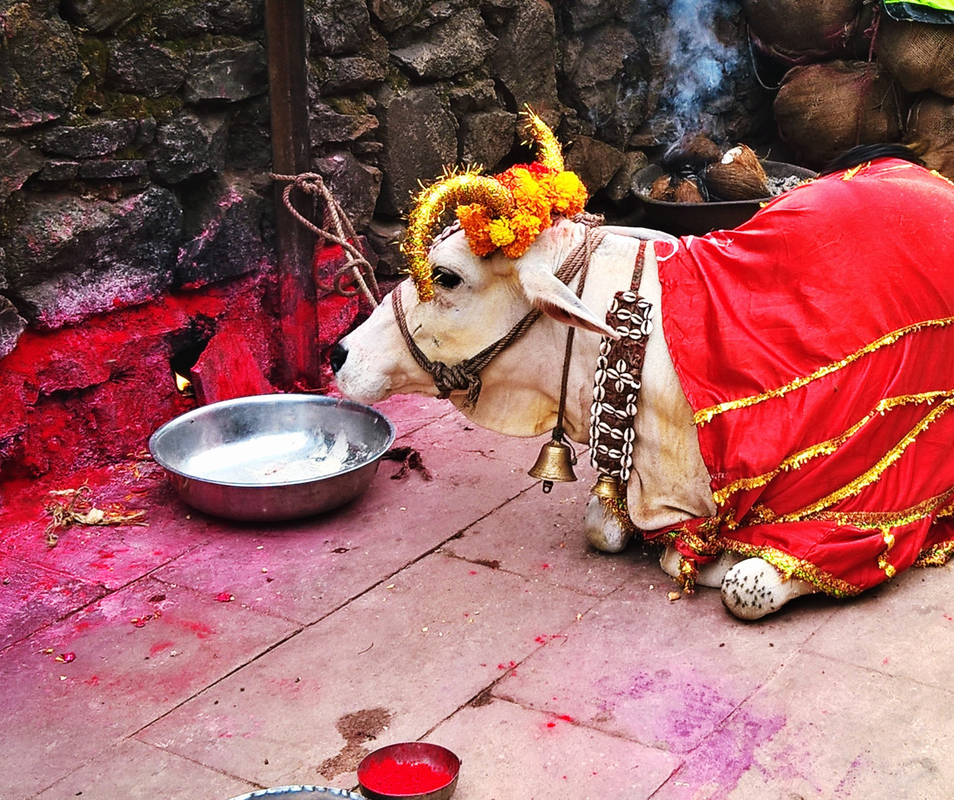
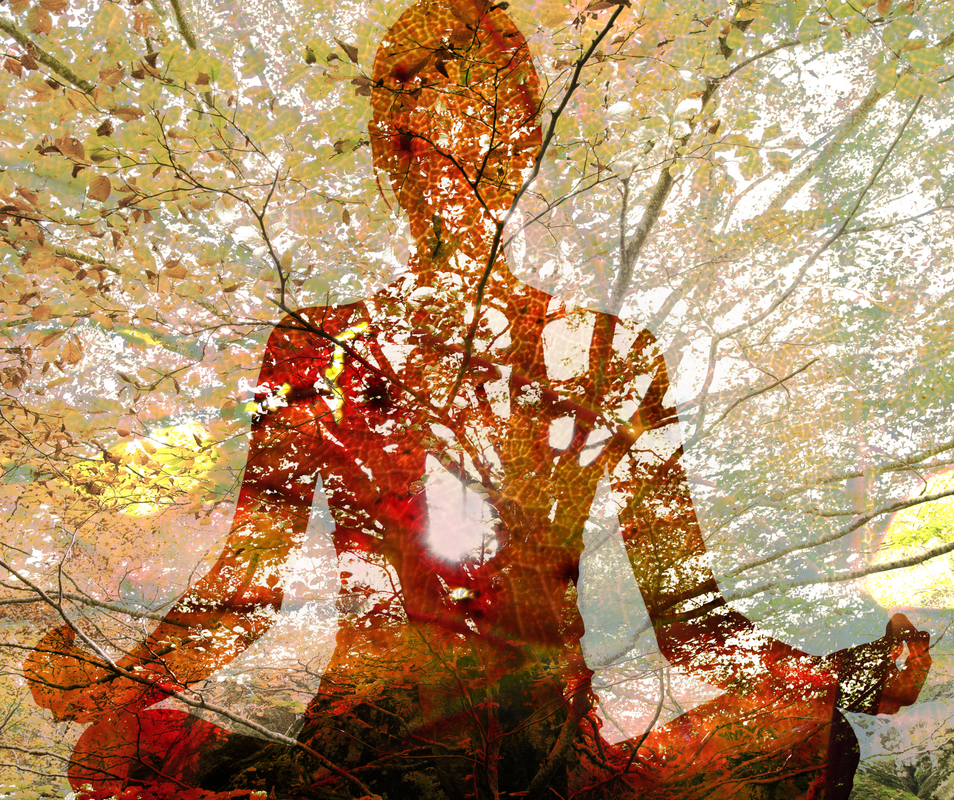
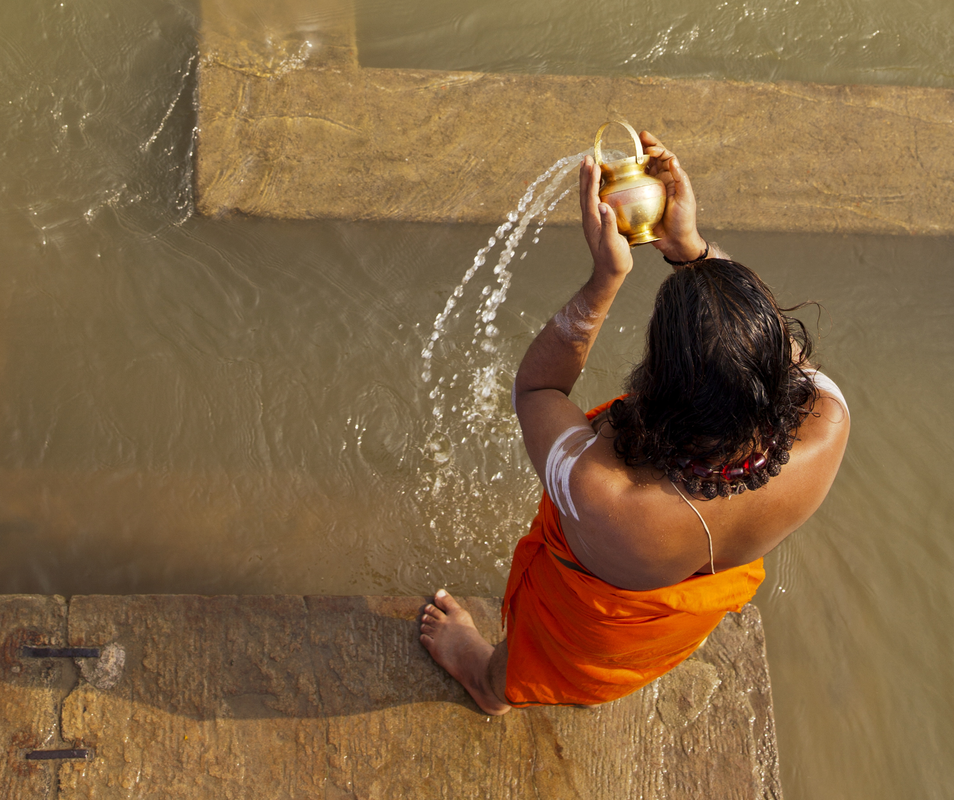
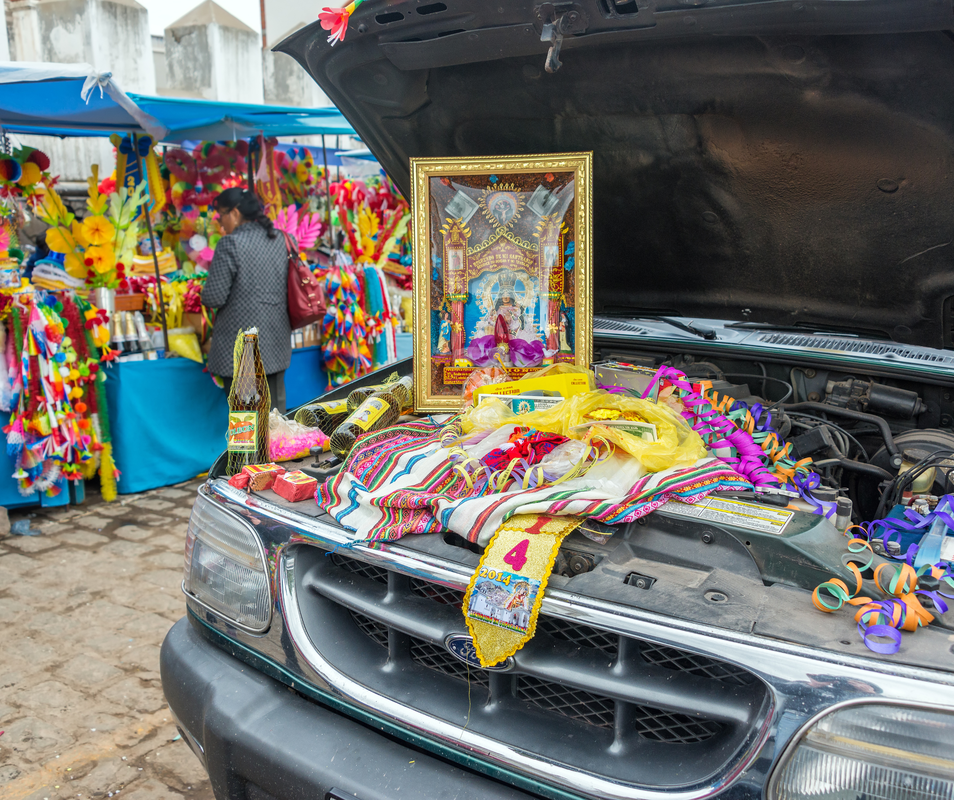
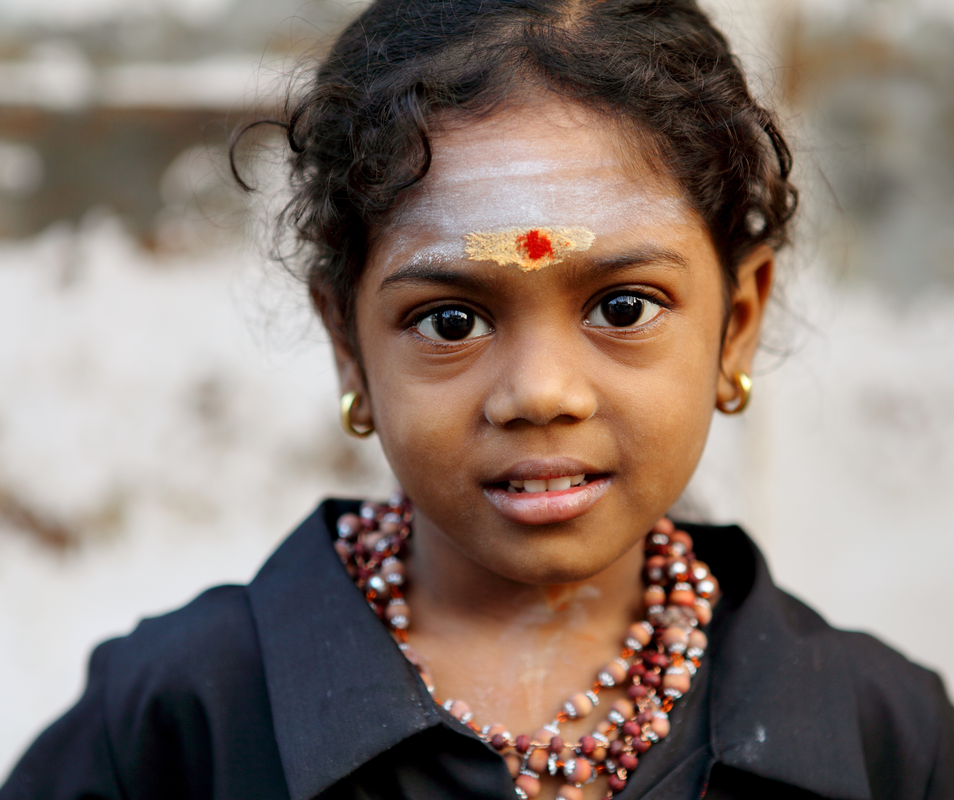
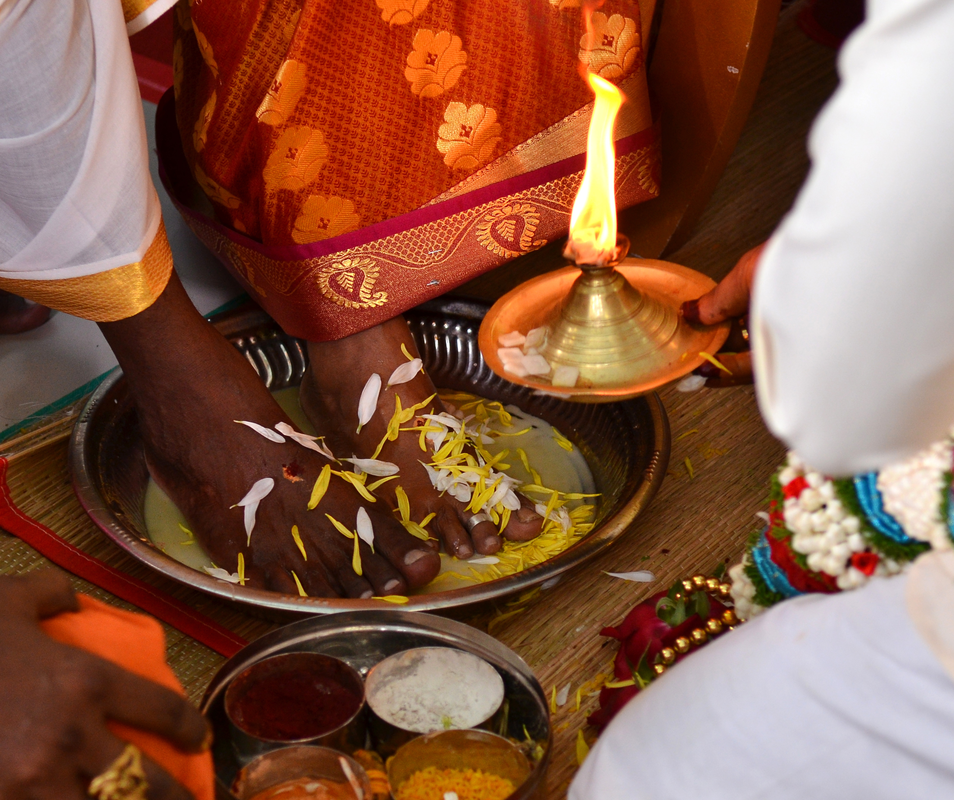
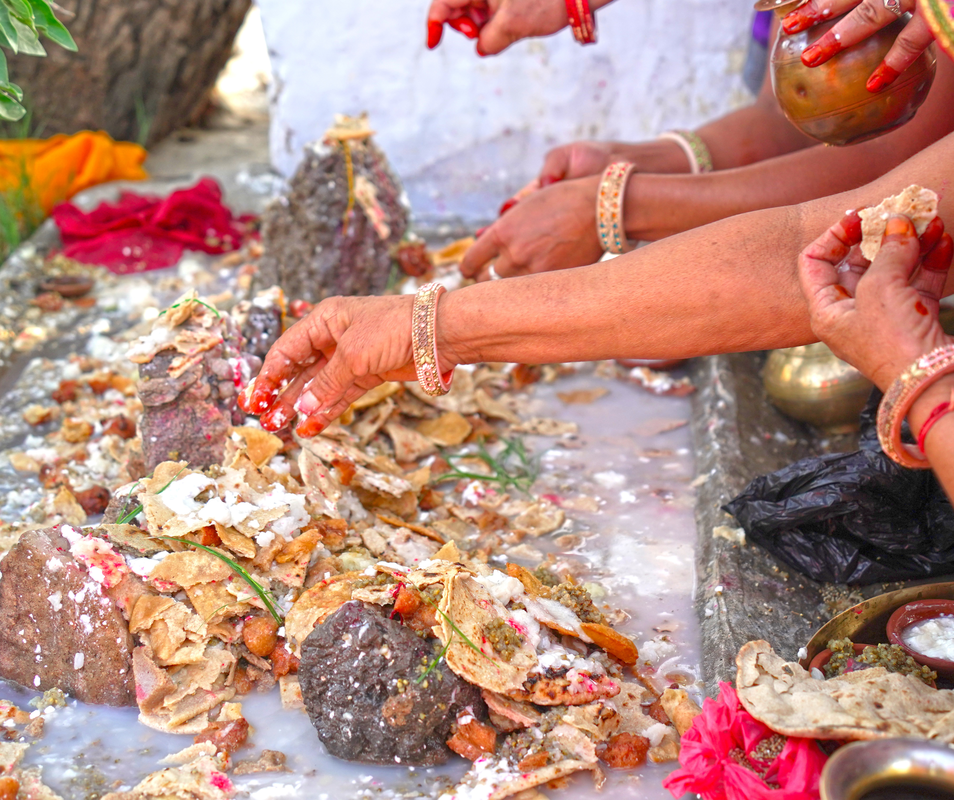
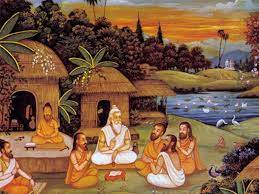
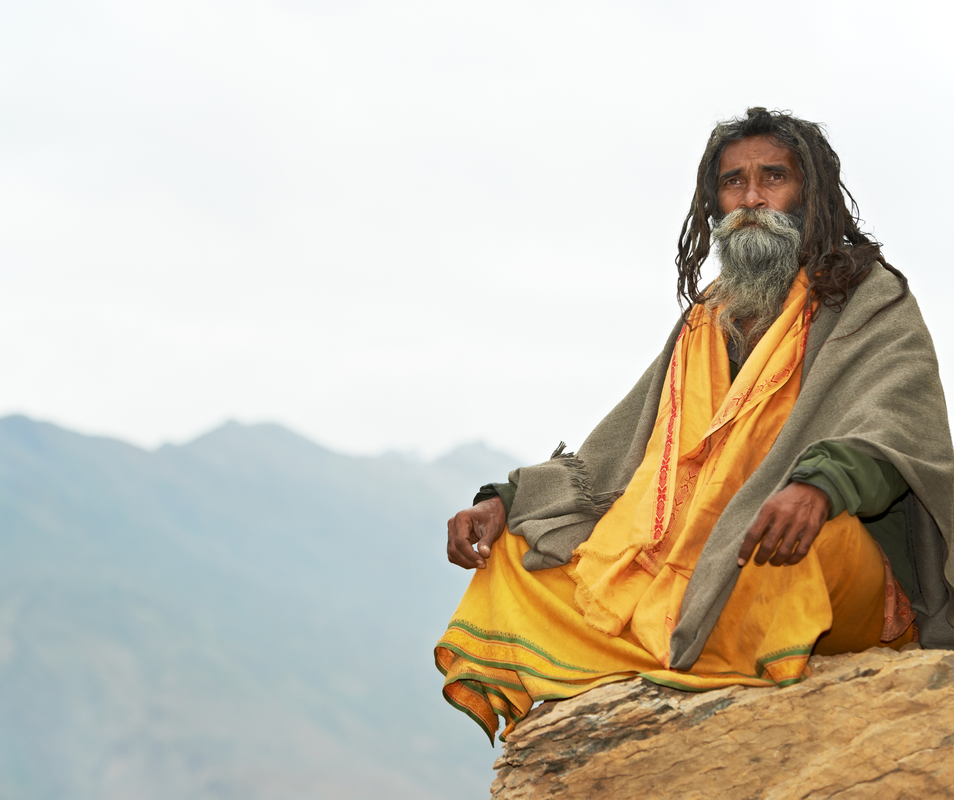
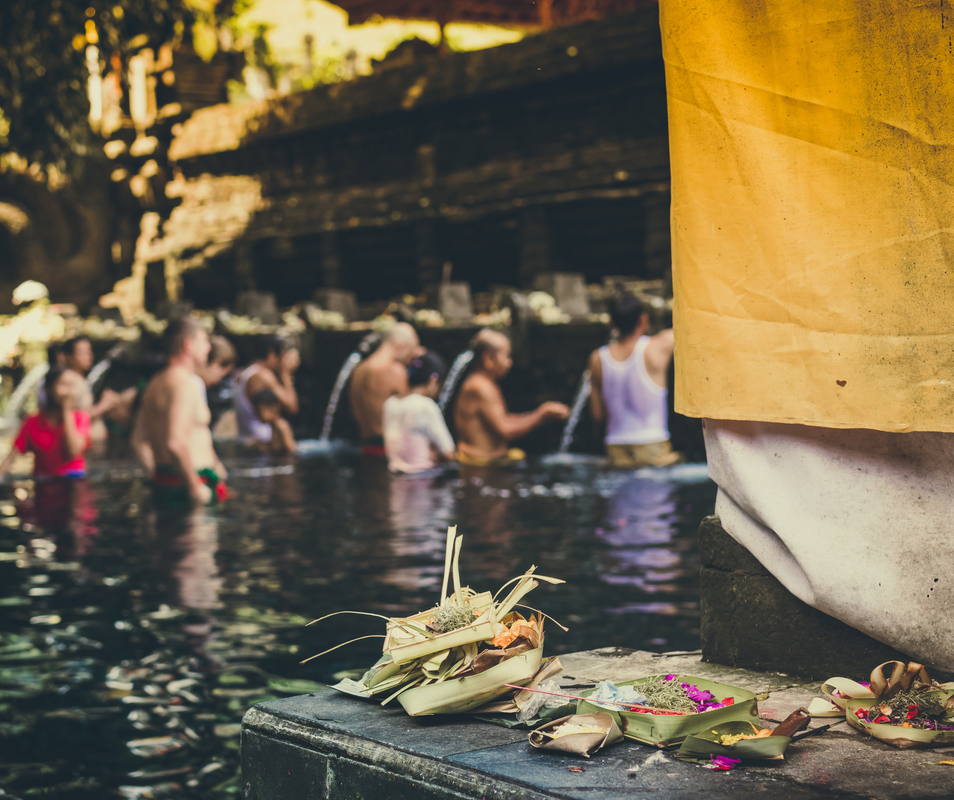
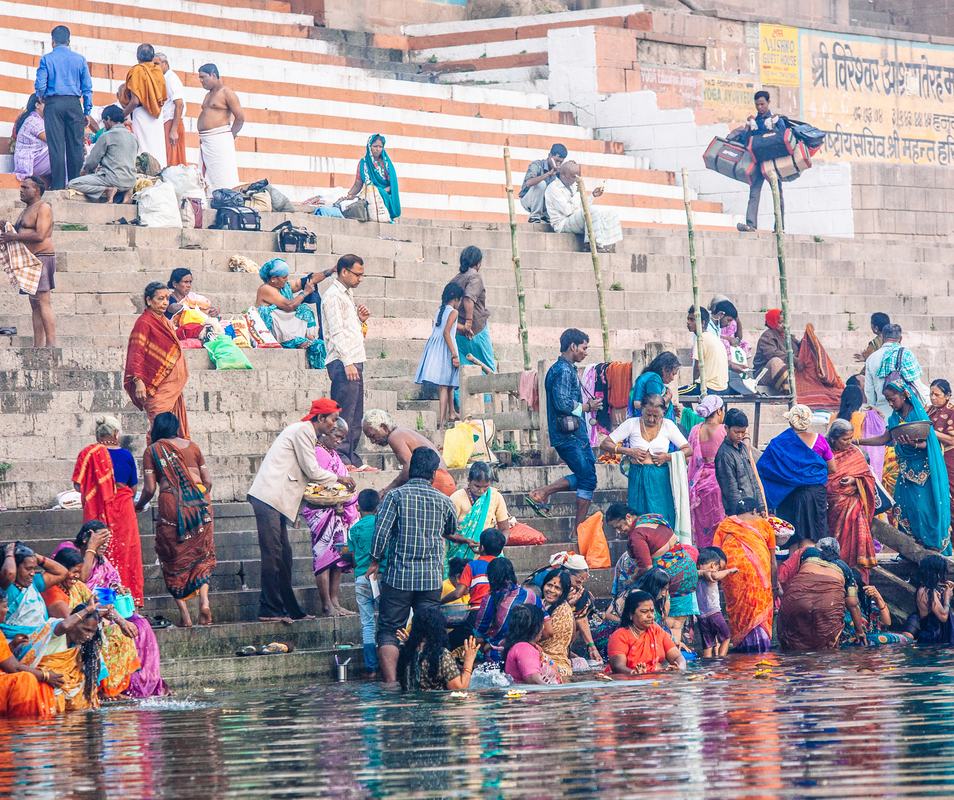
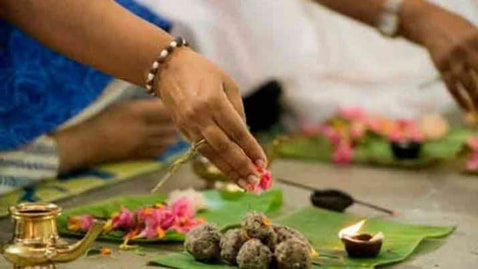
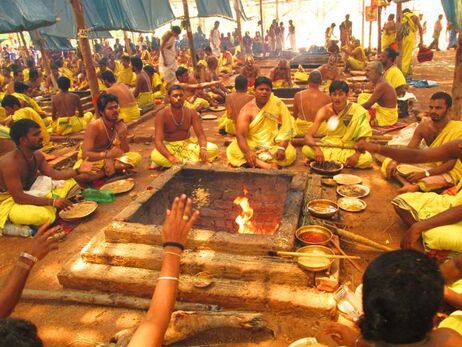
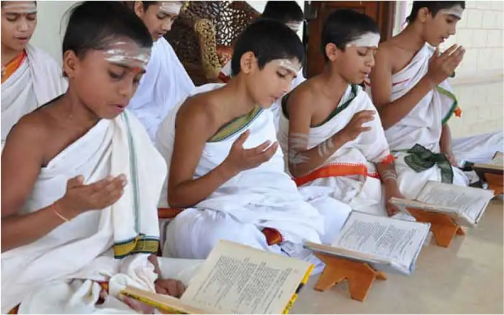
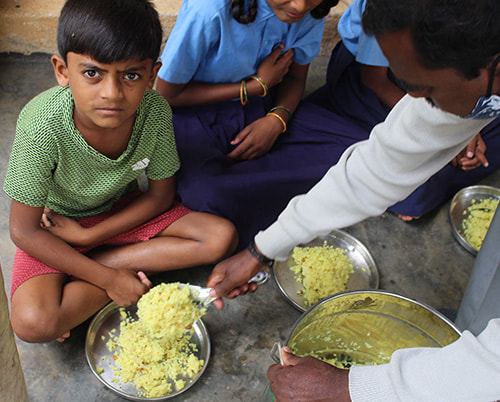
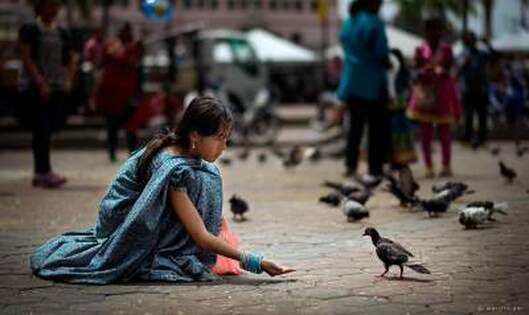

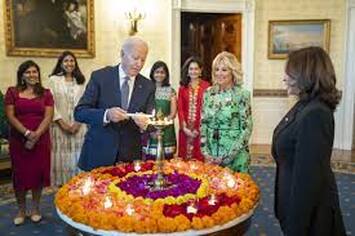
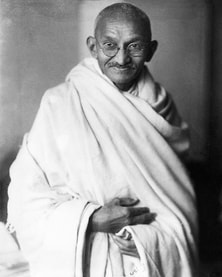
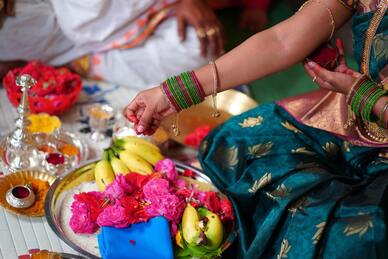
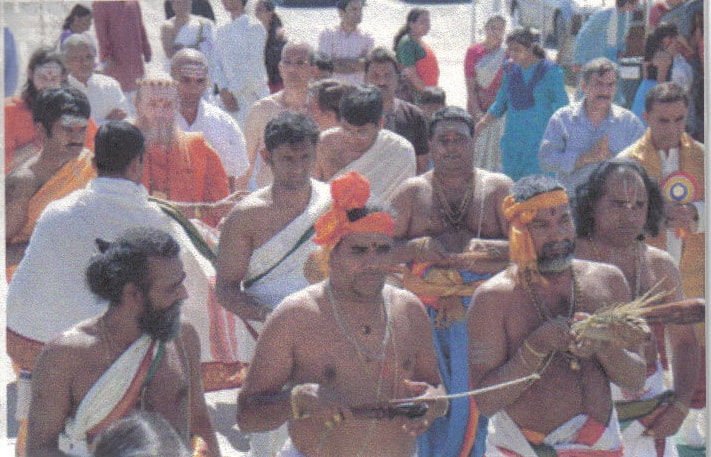

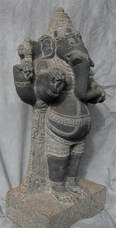

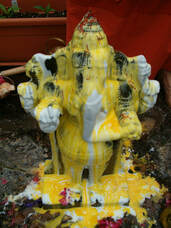
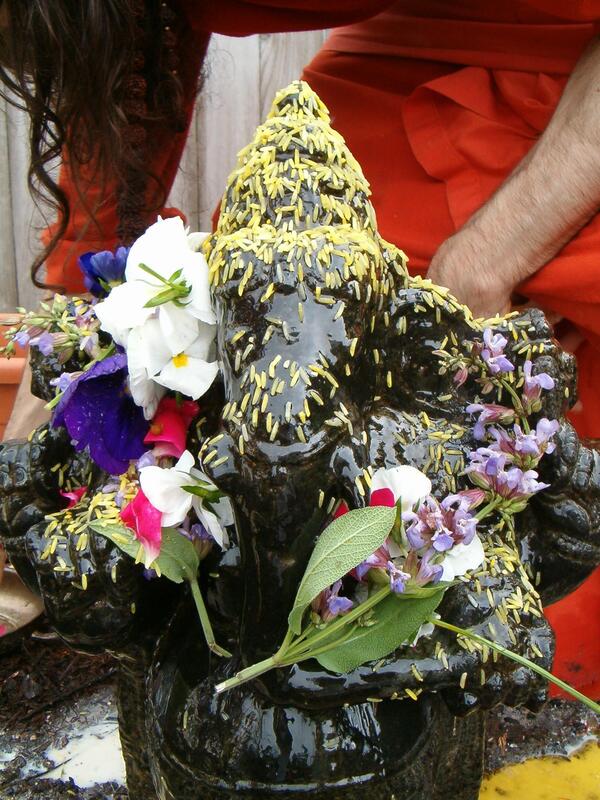
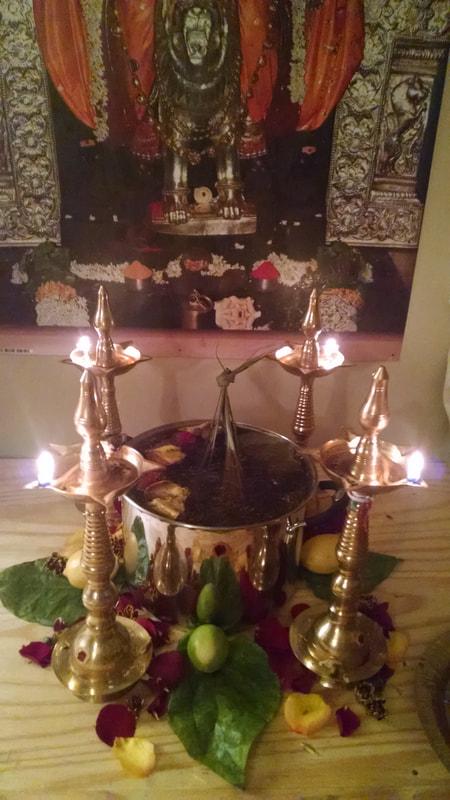
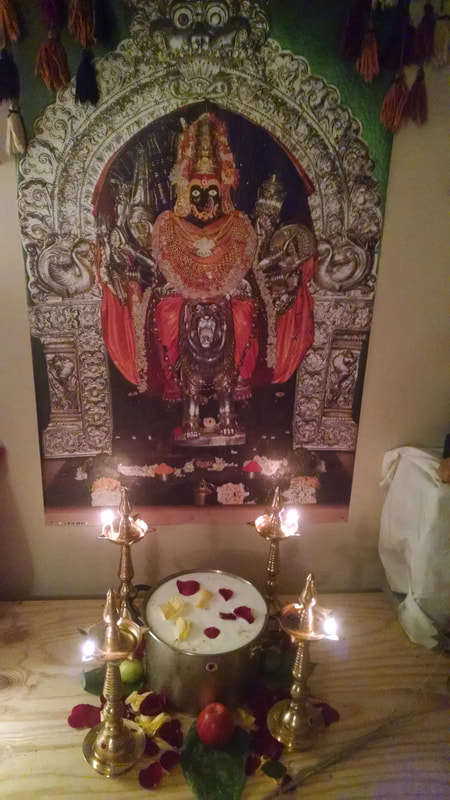

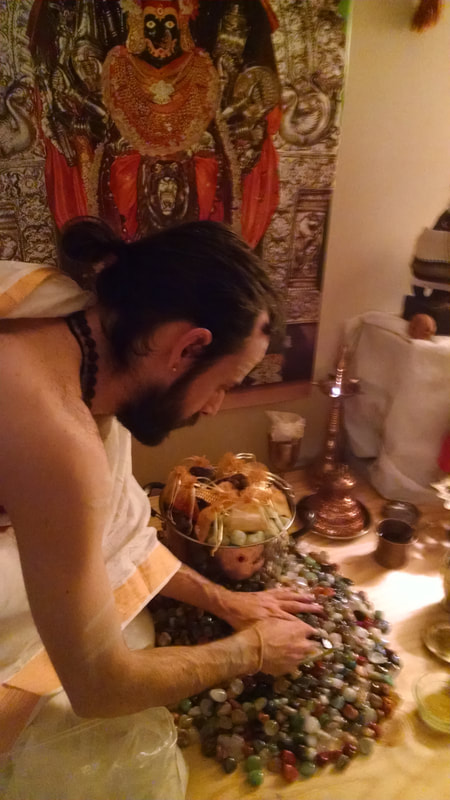
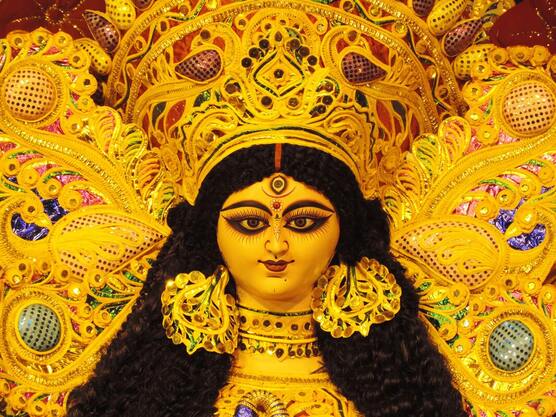
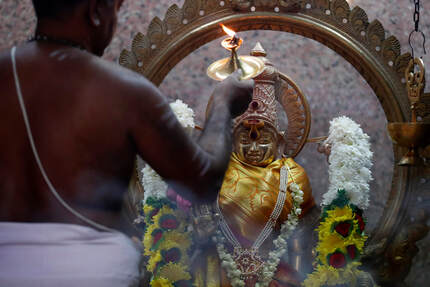
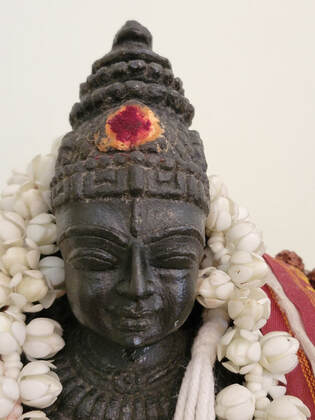
 RSS Feed
RSS Feed